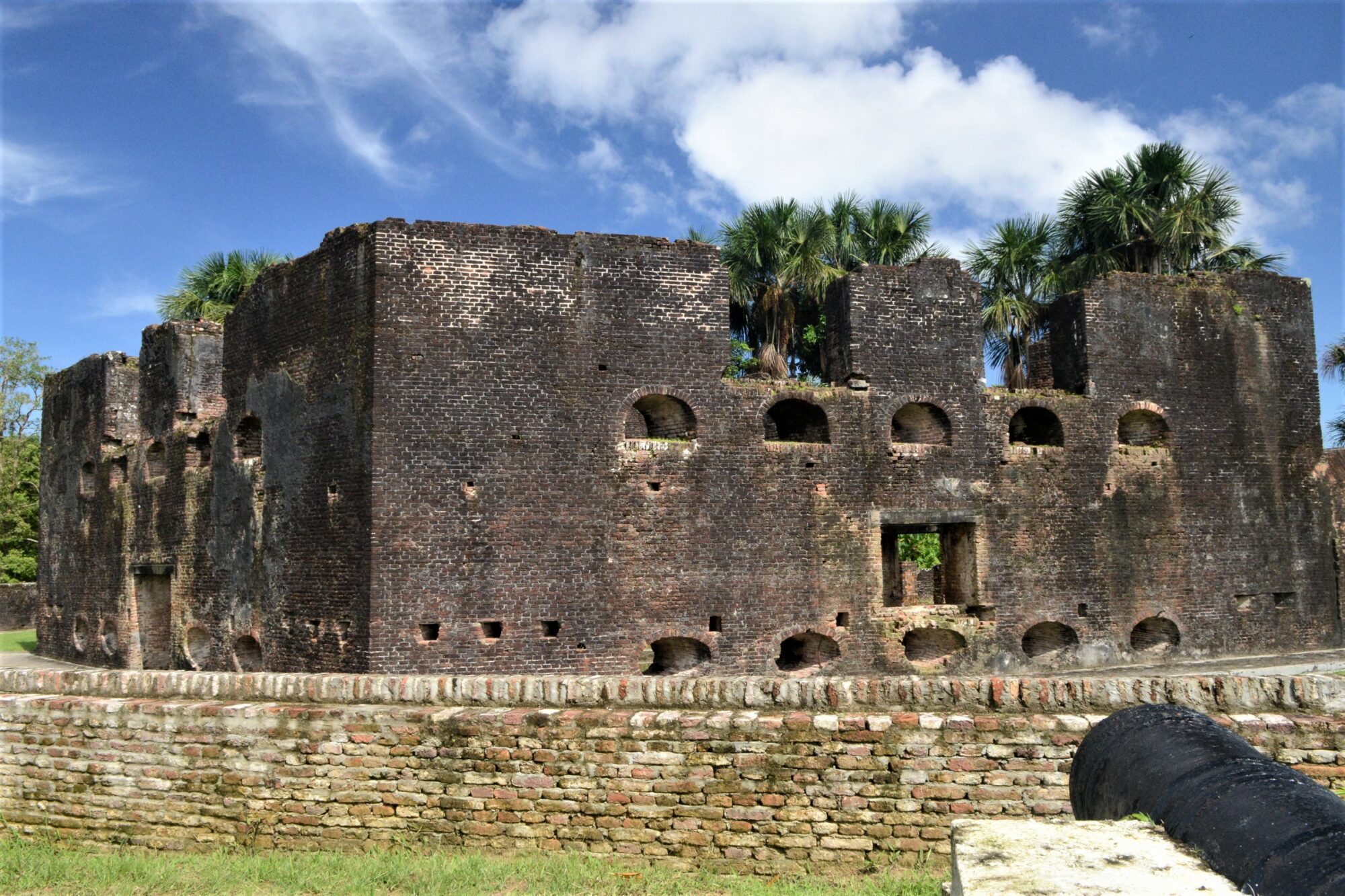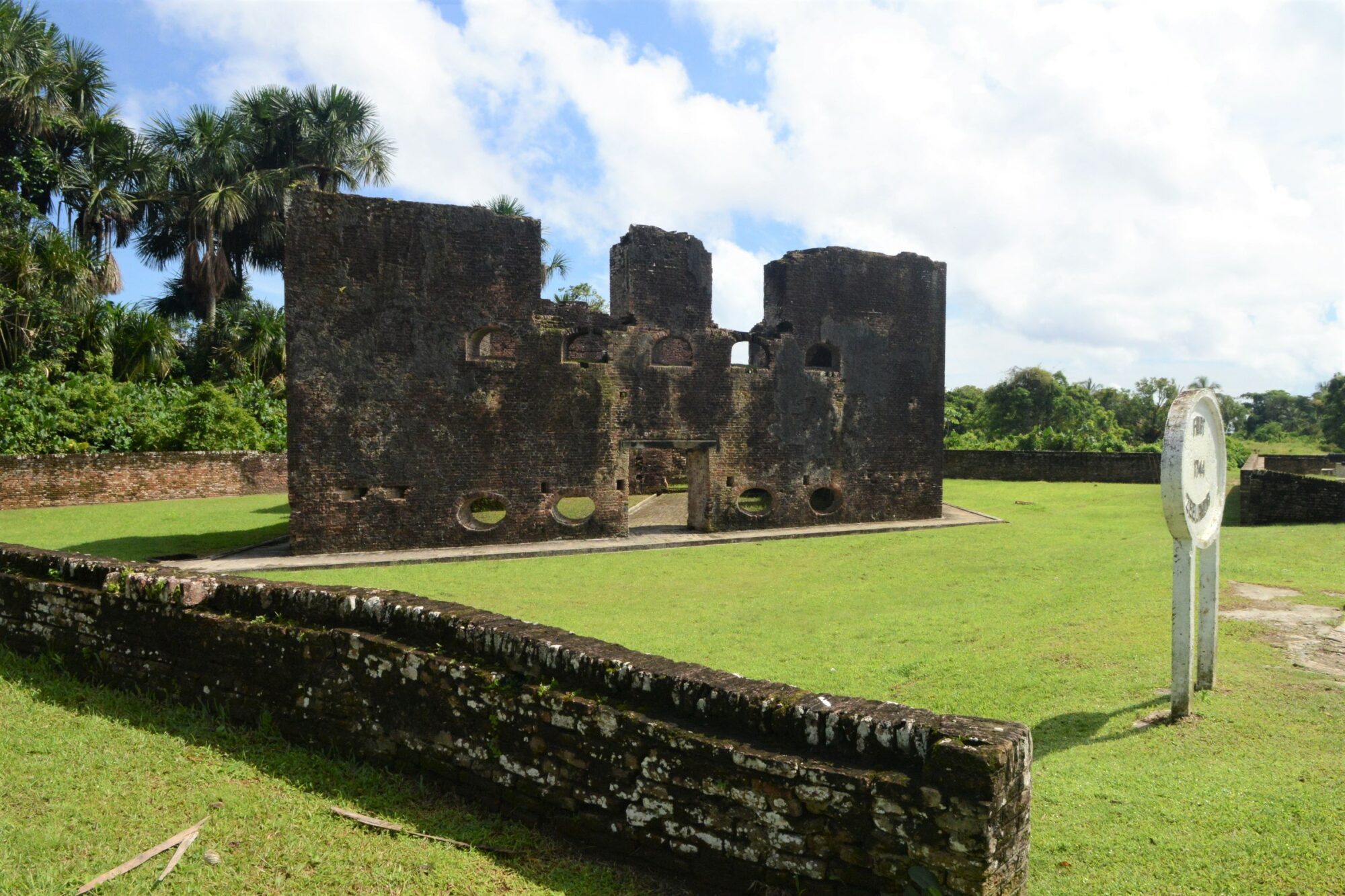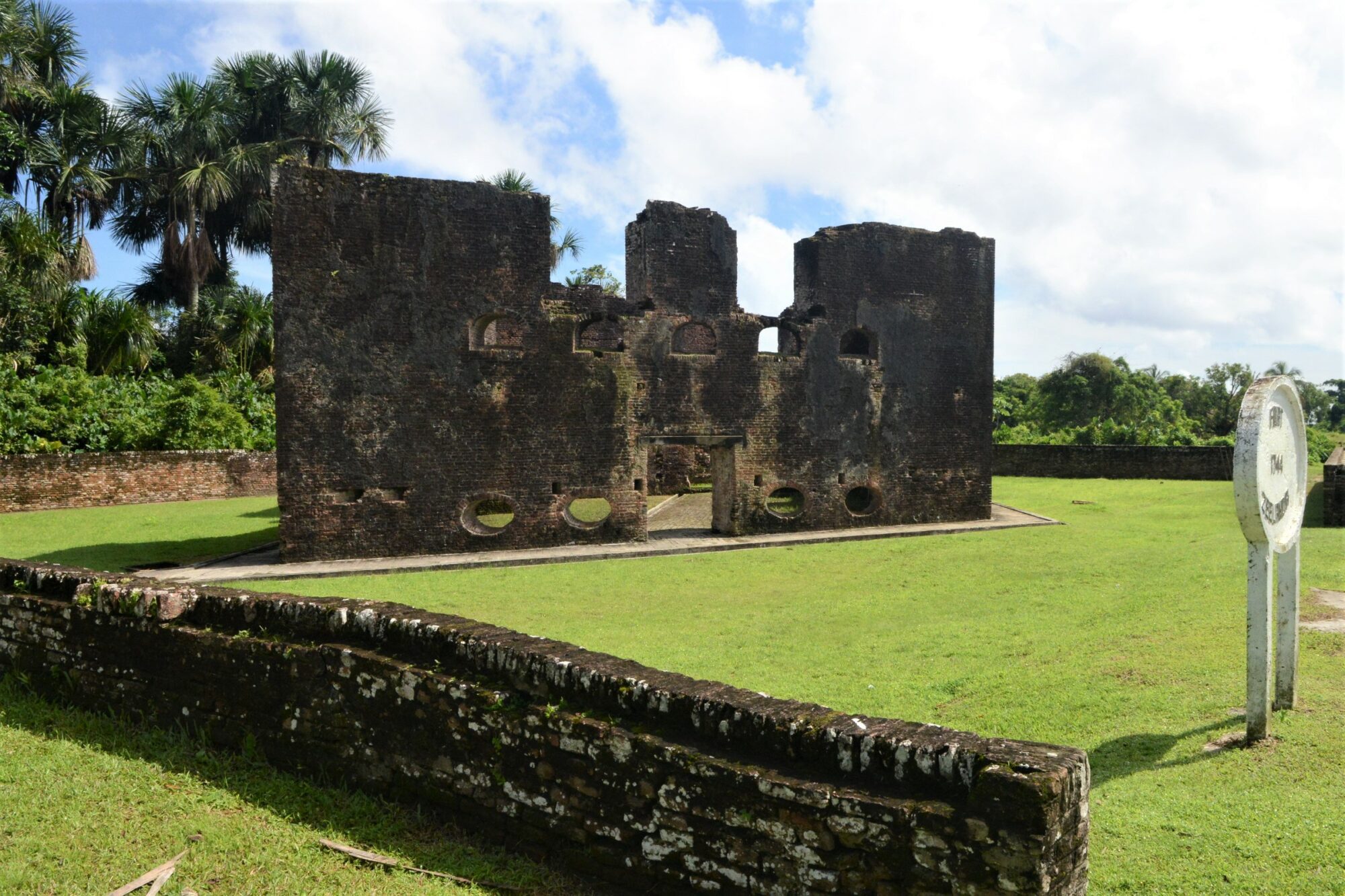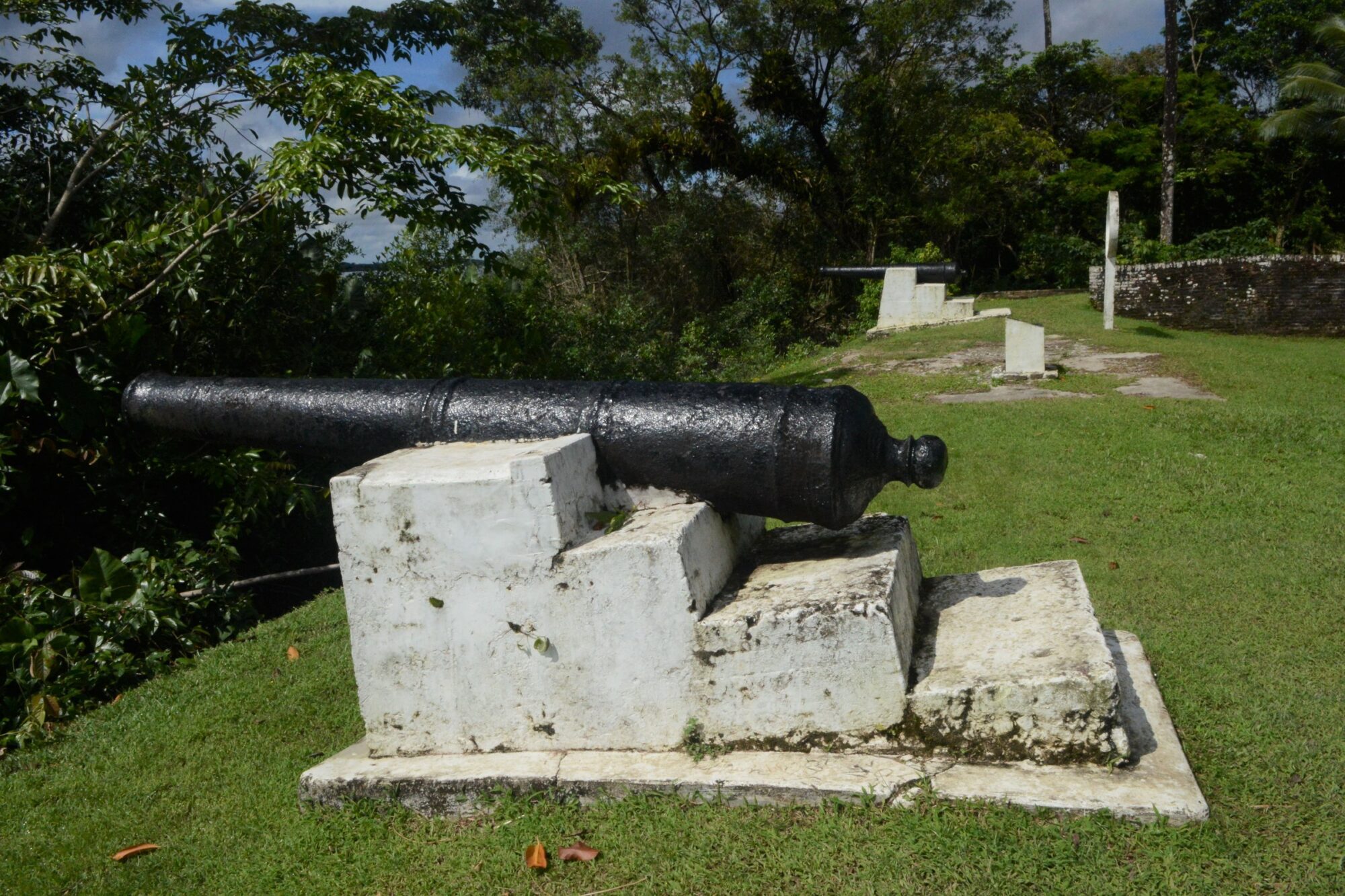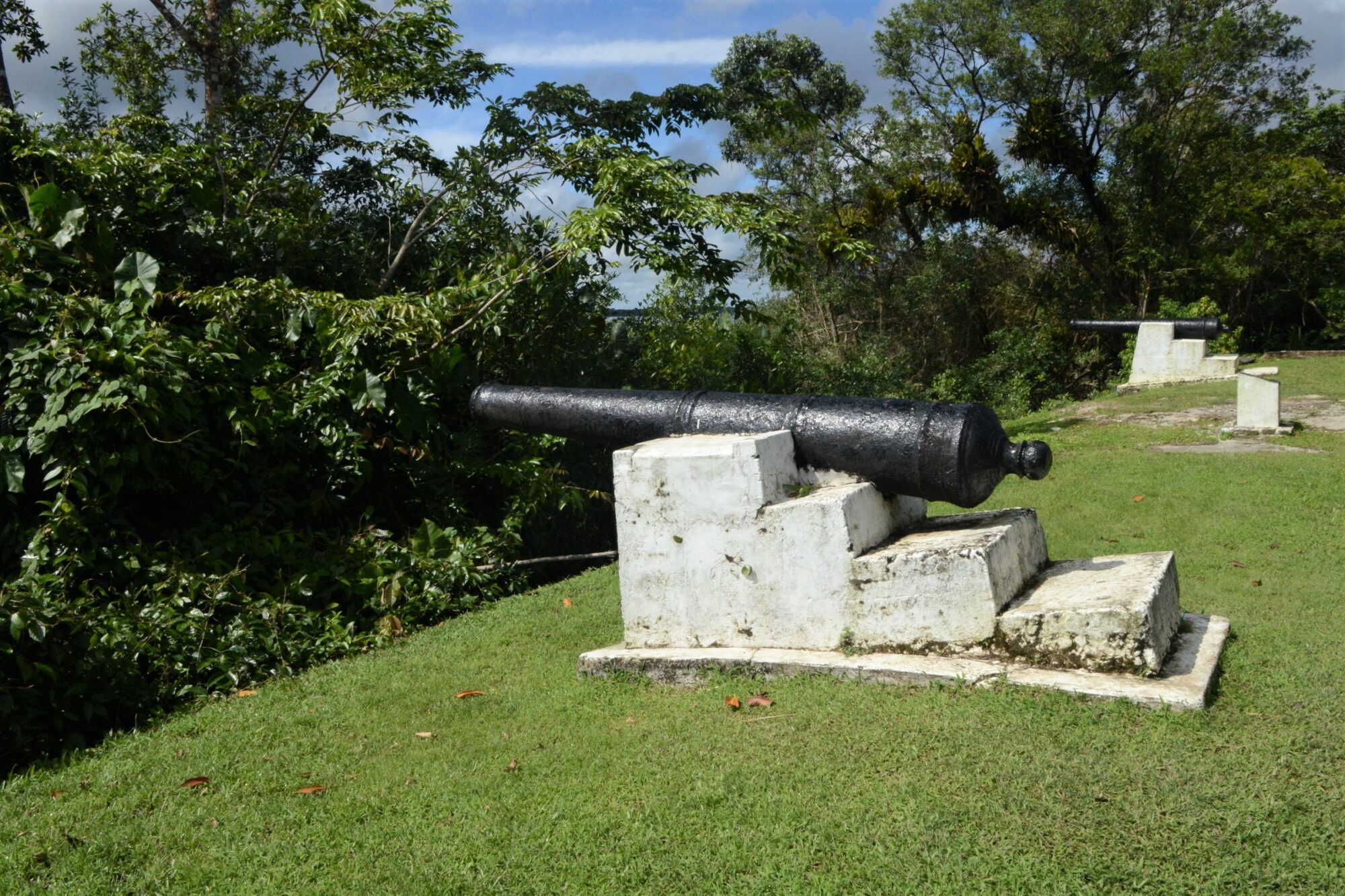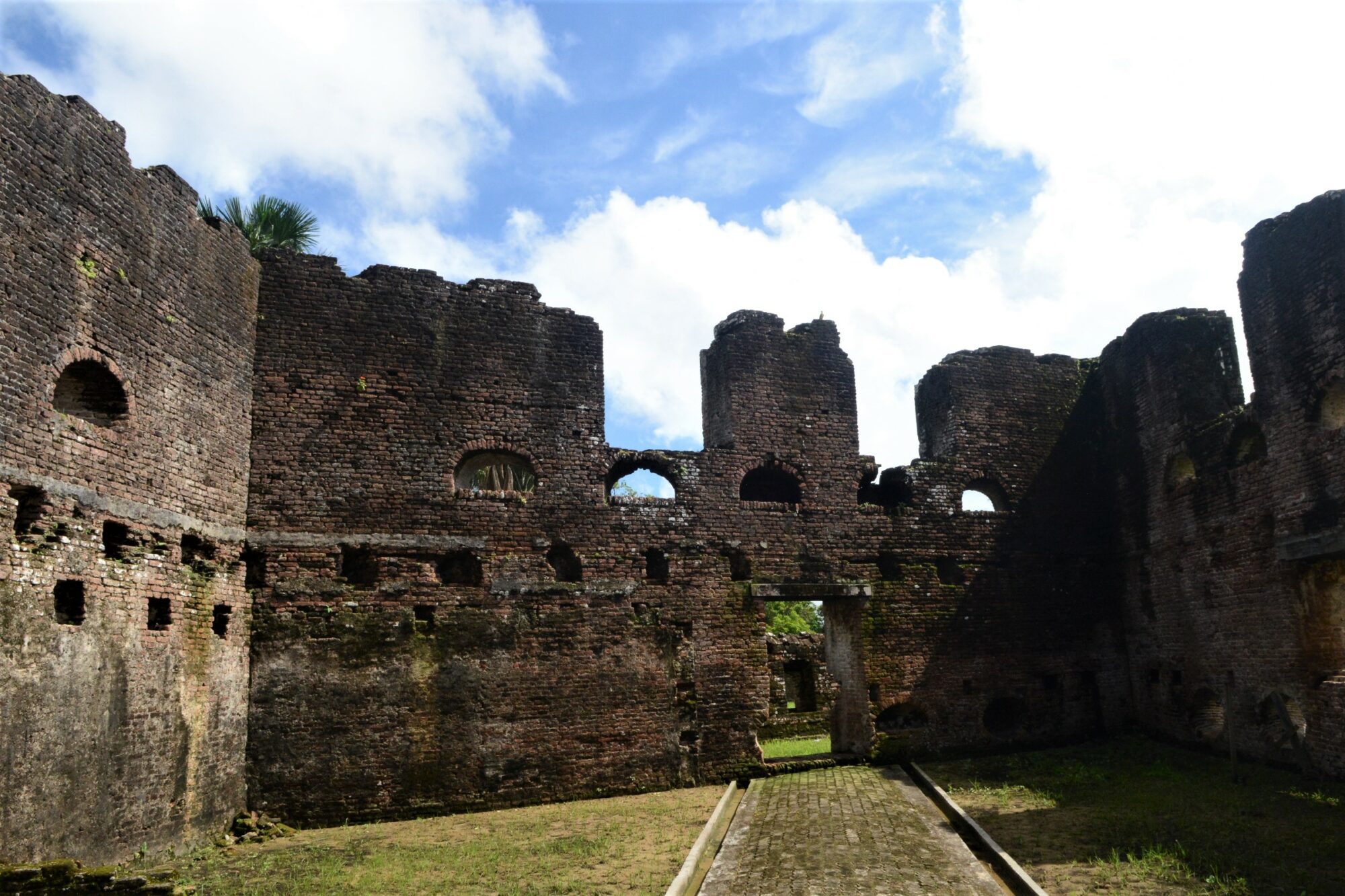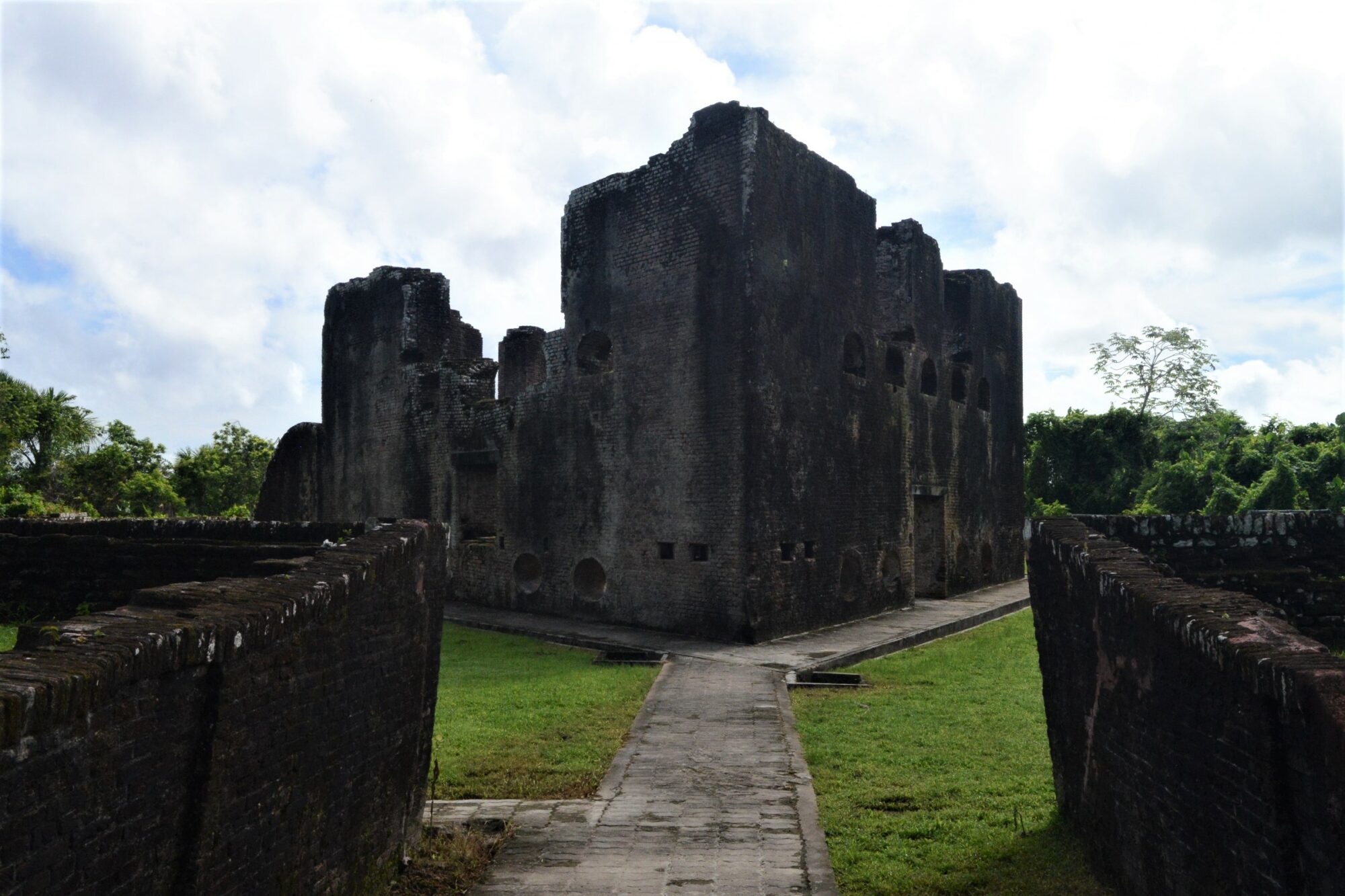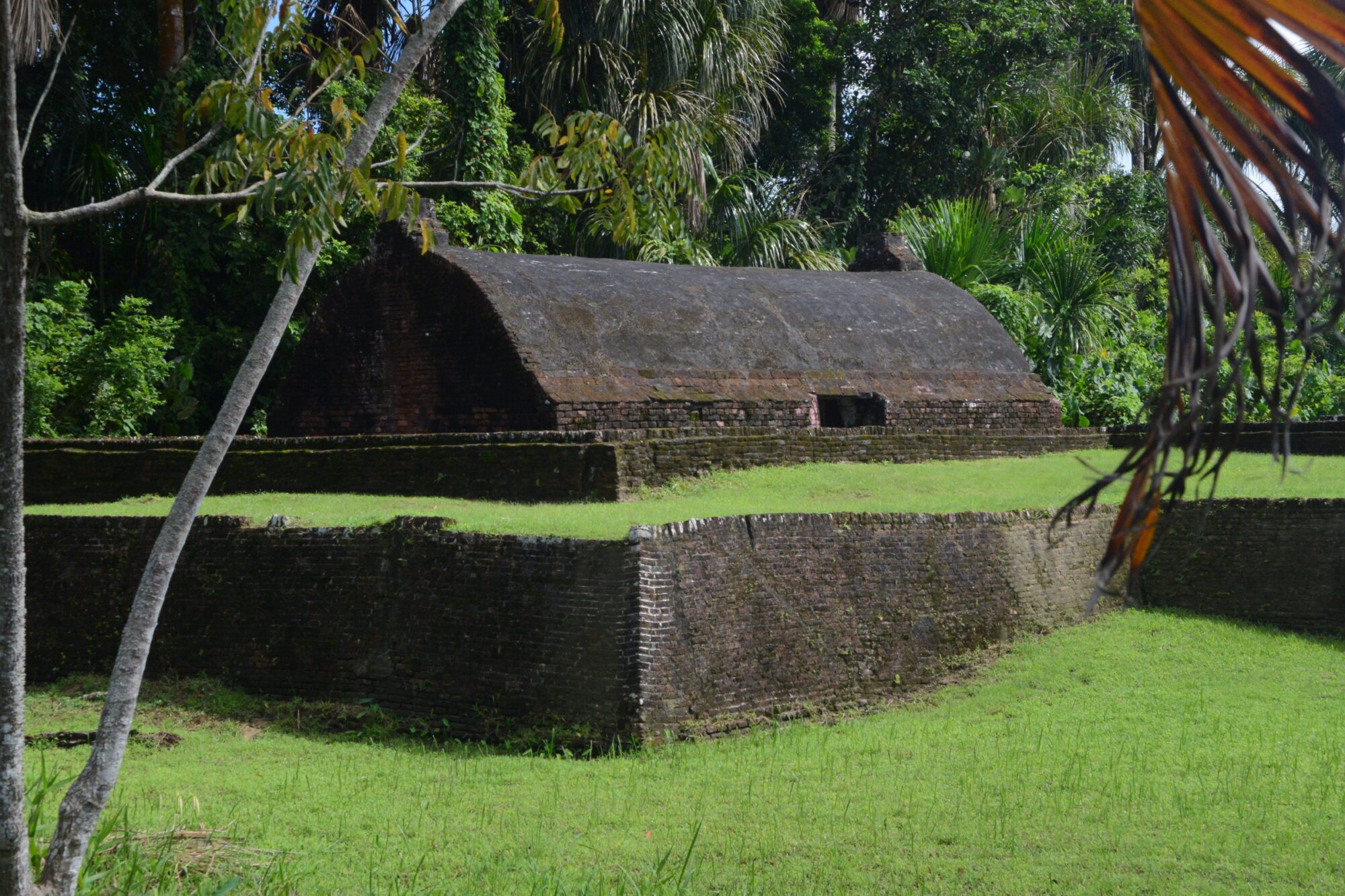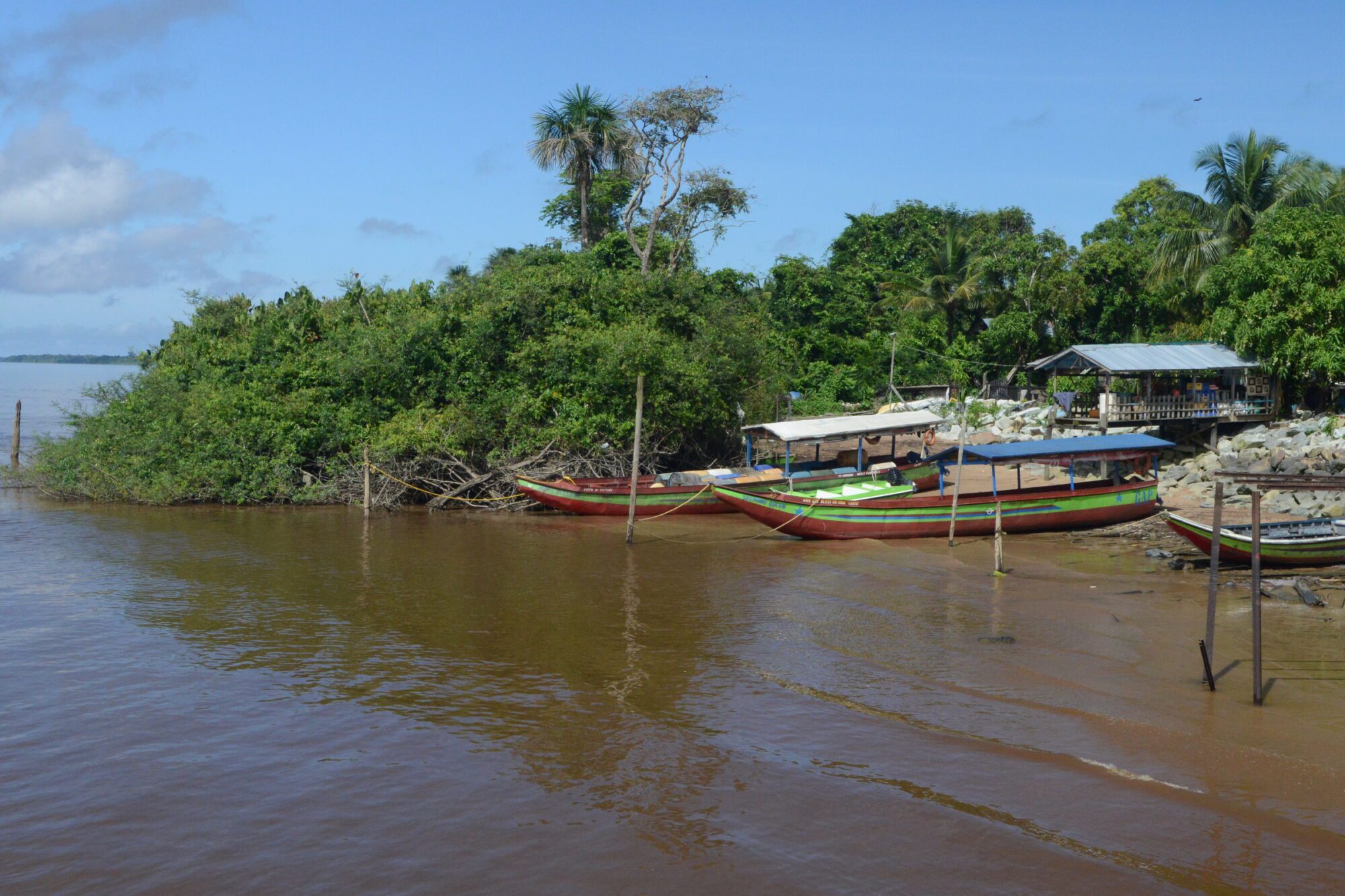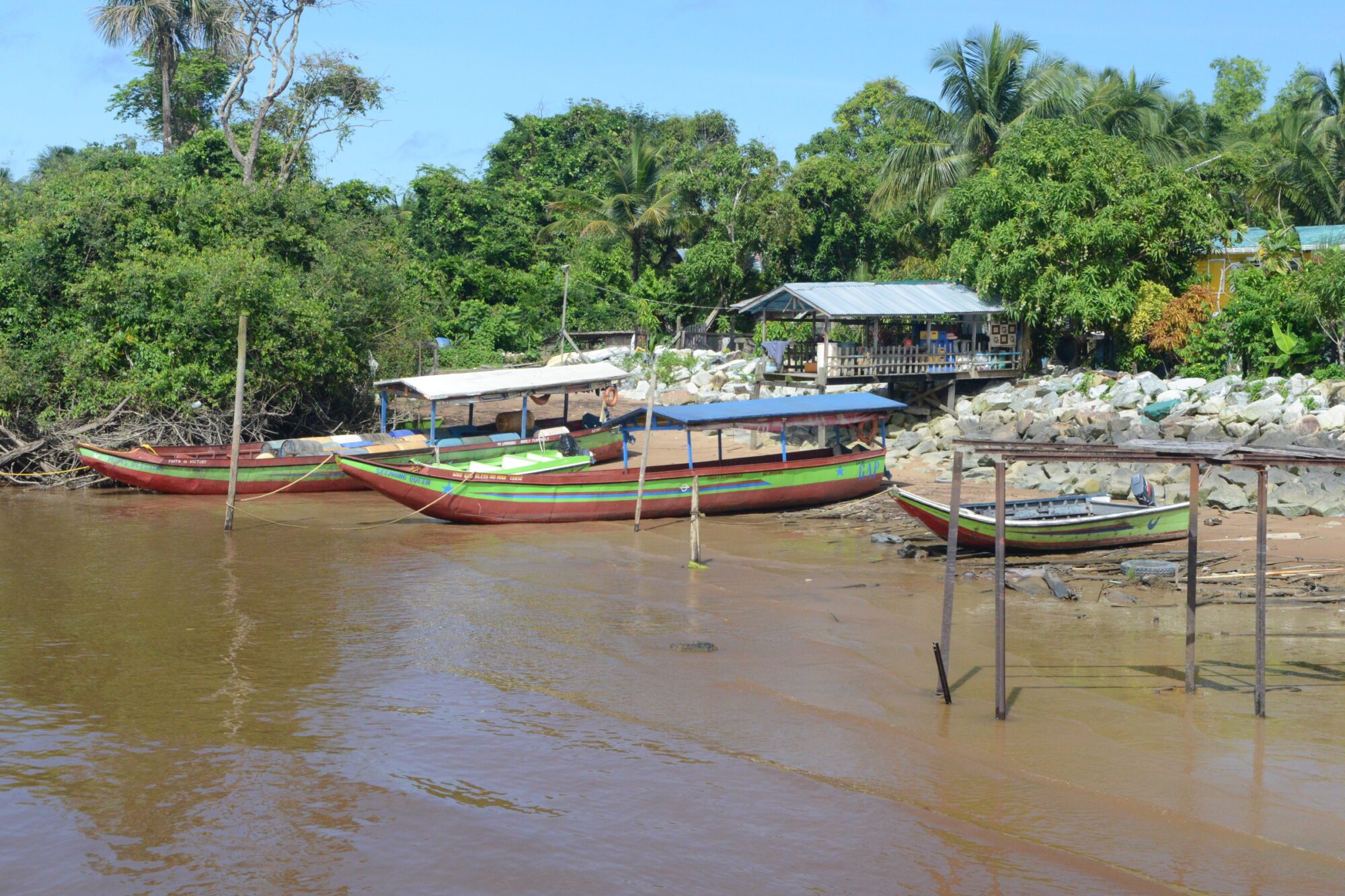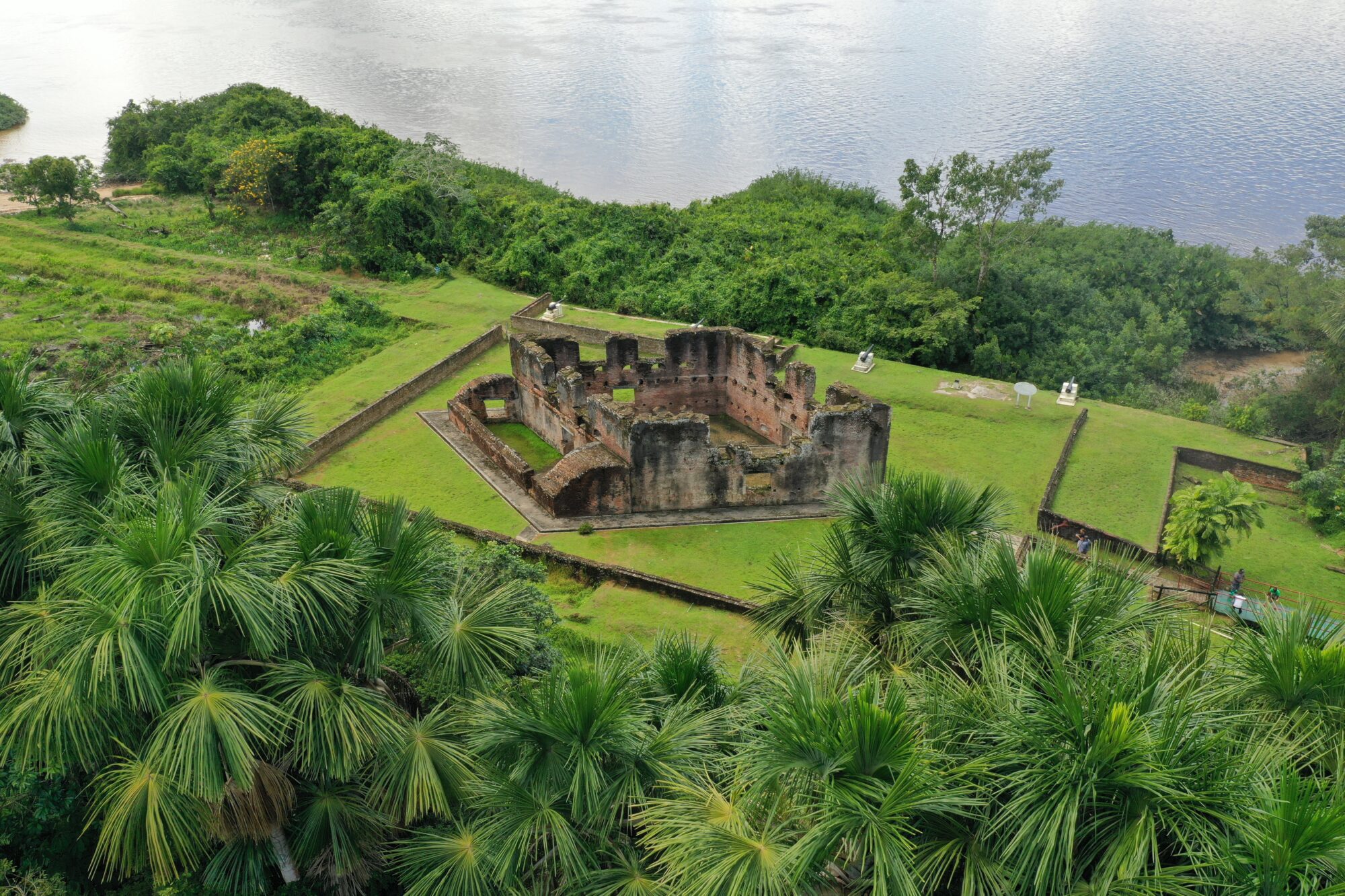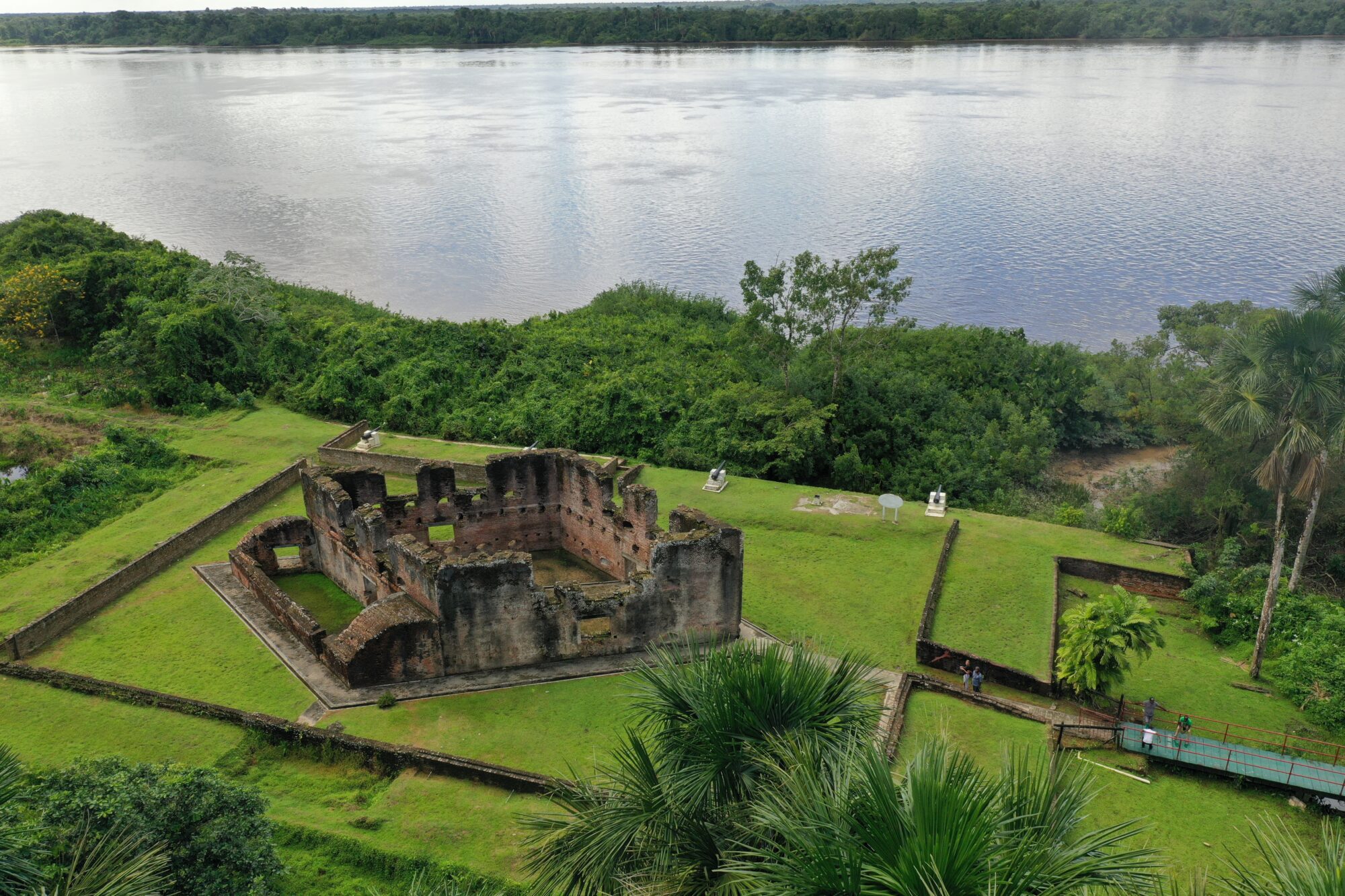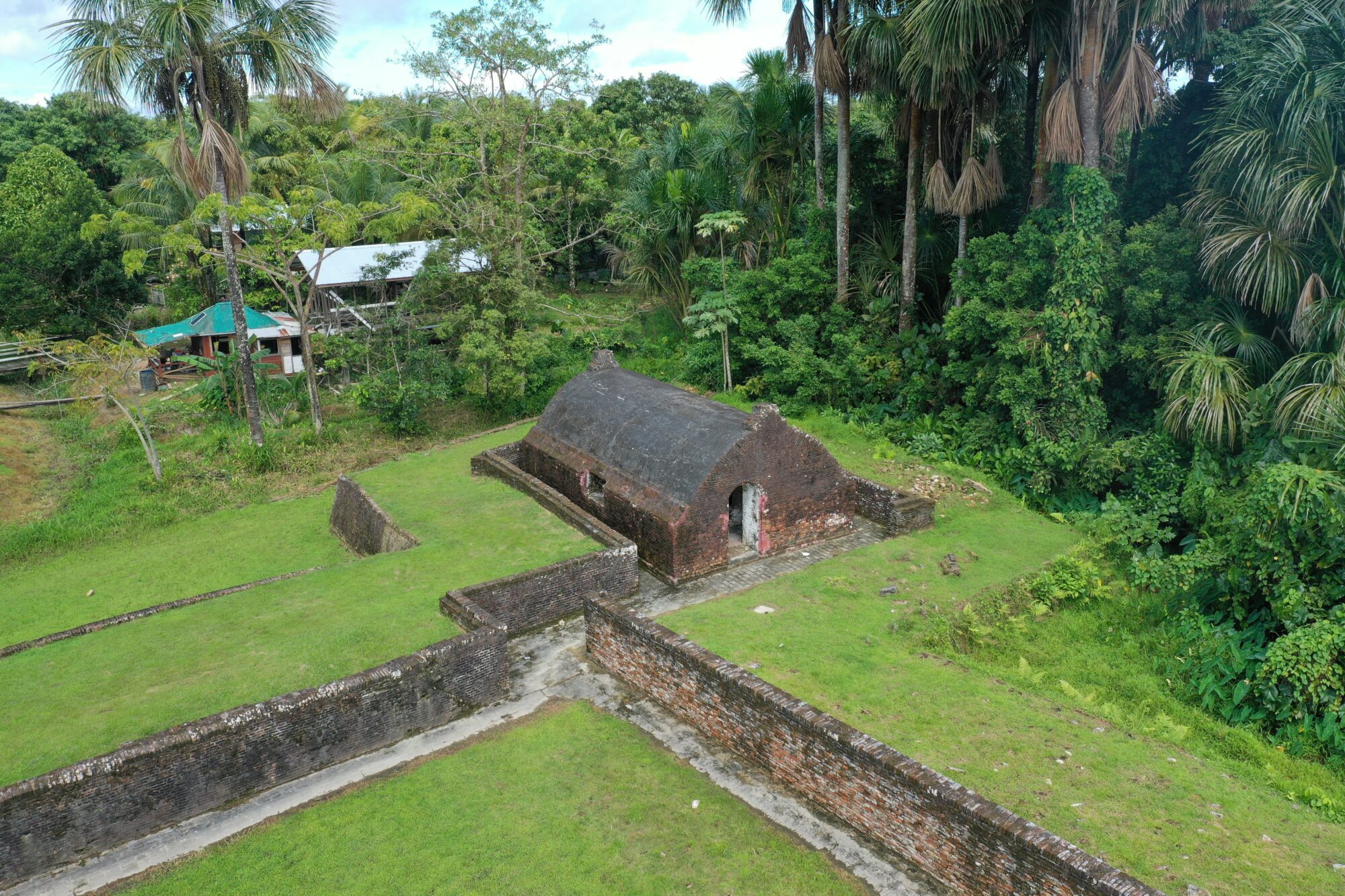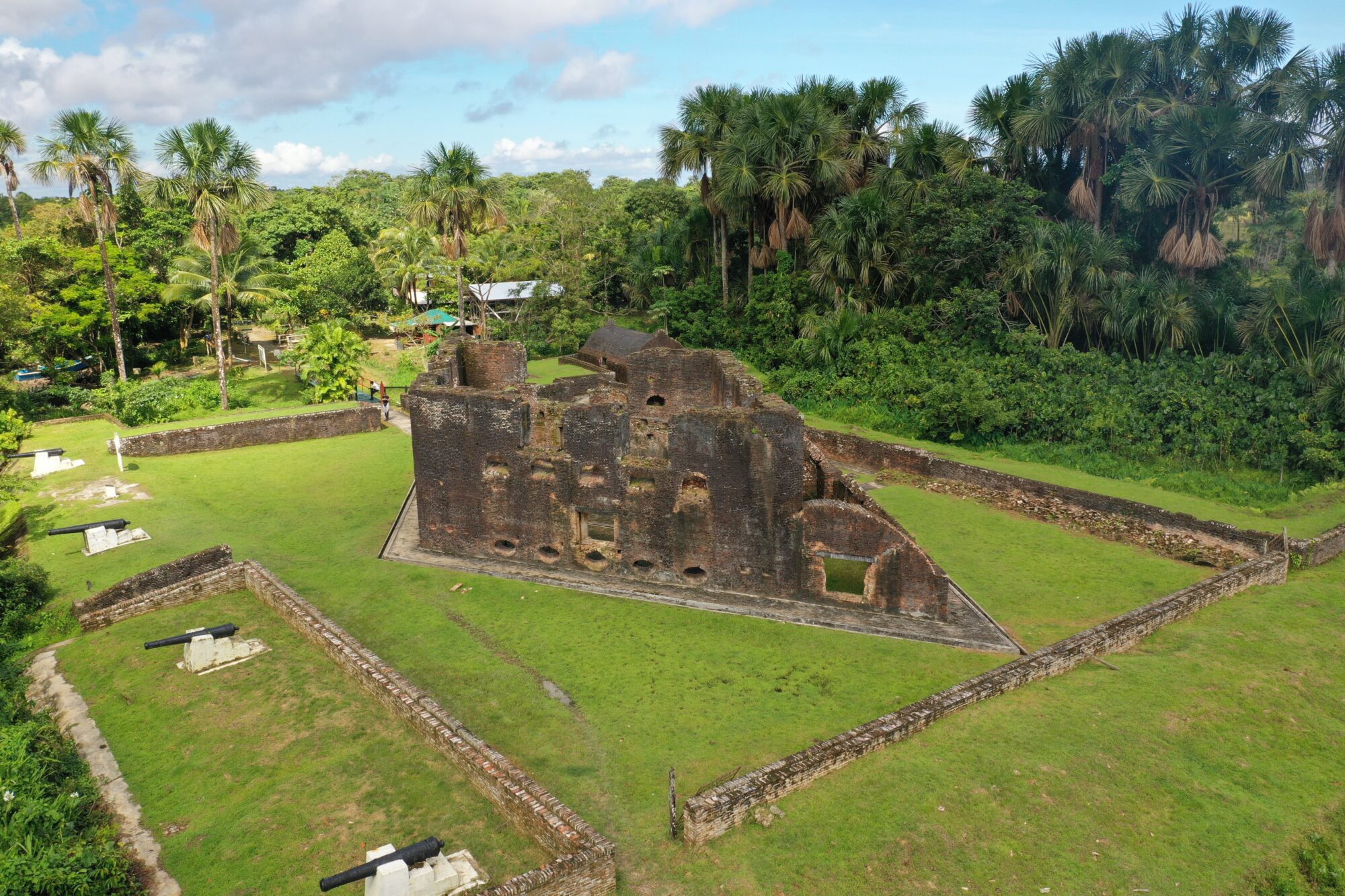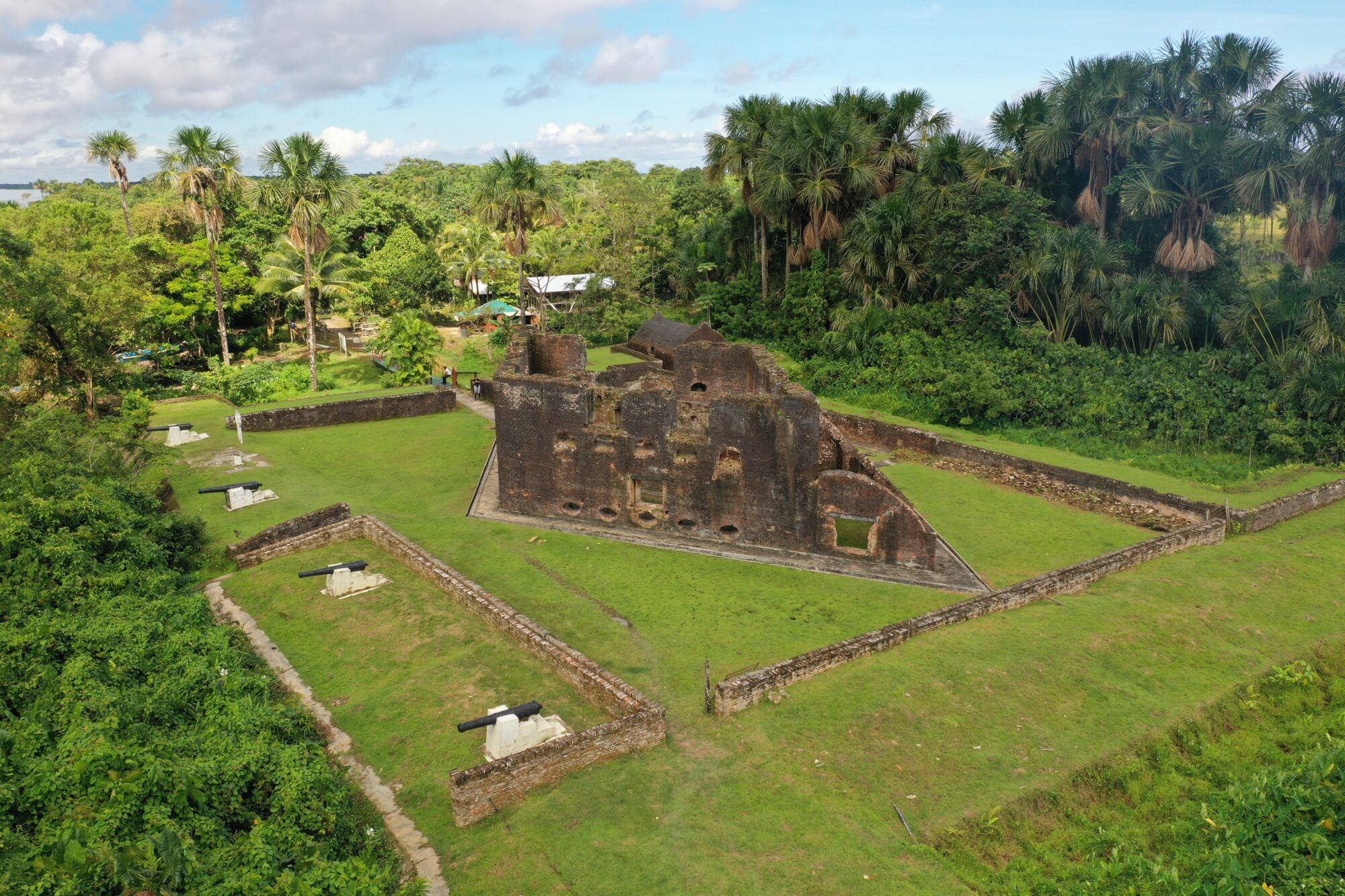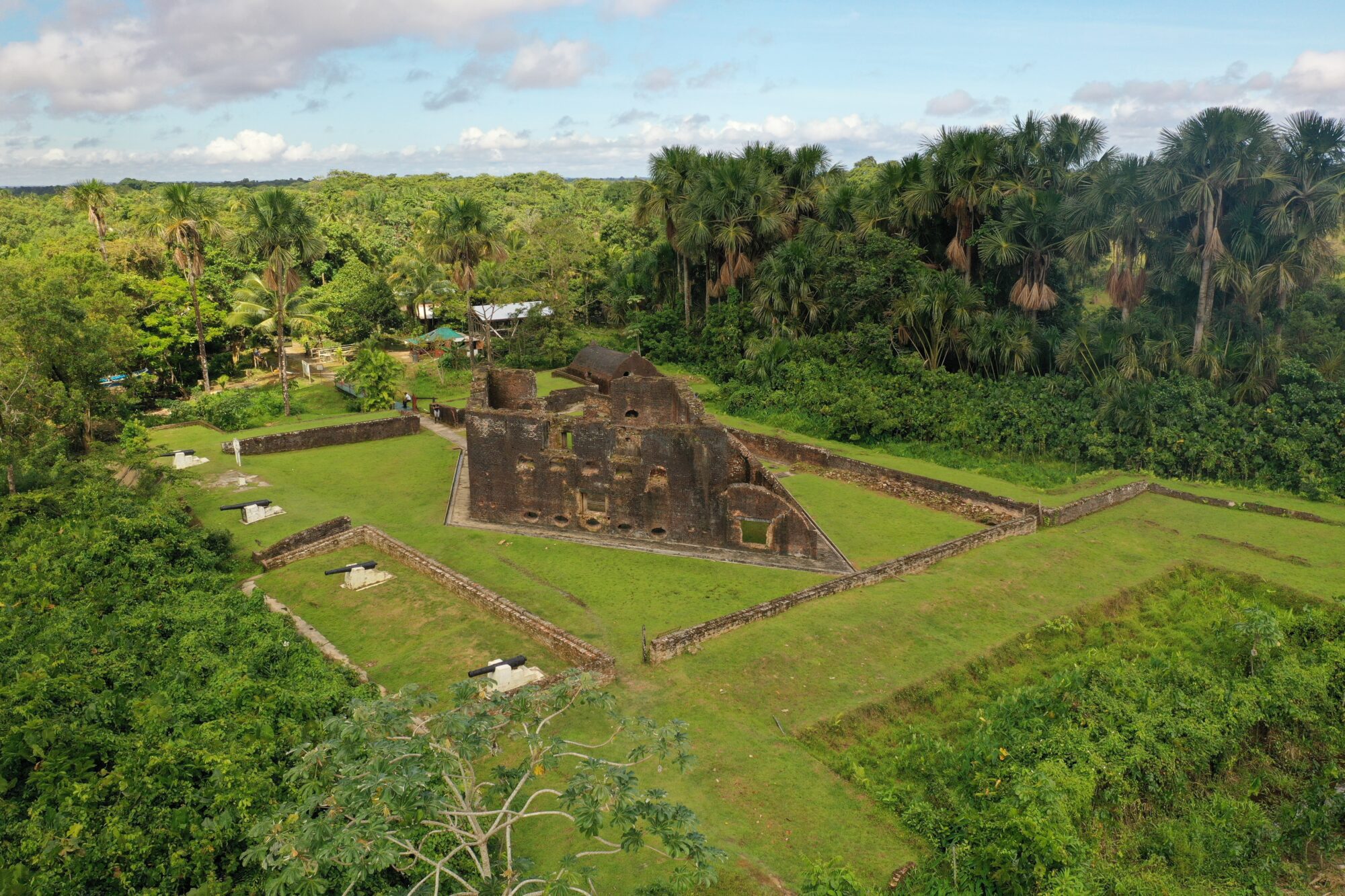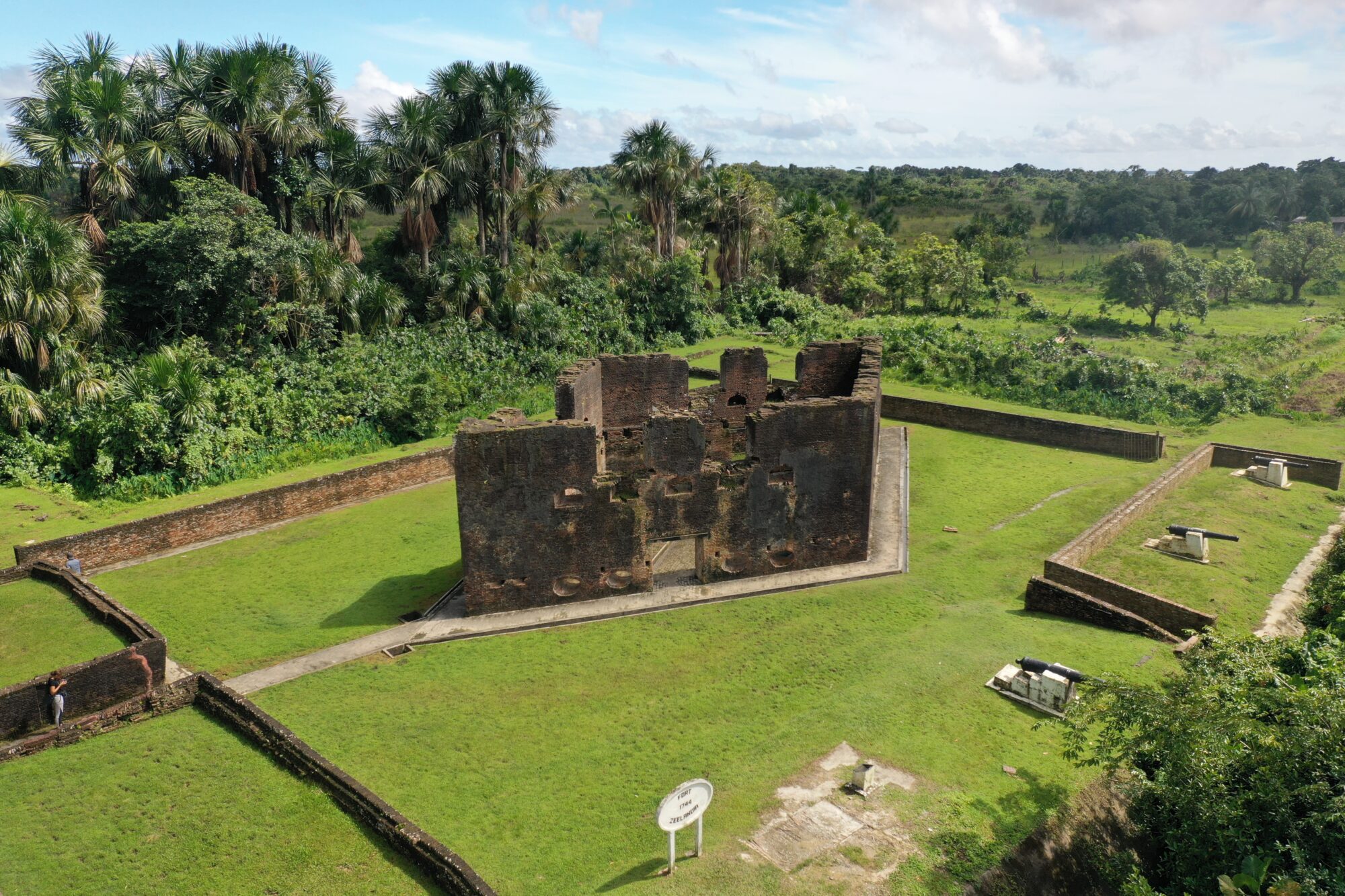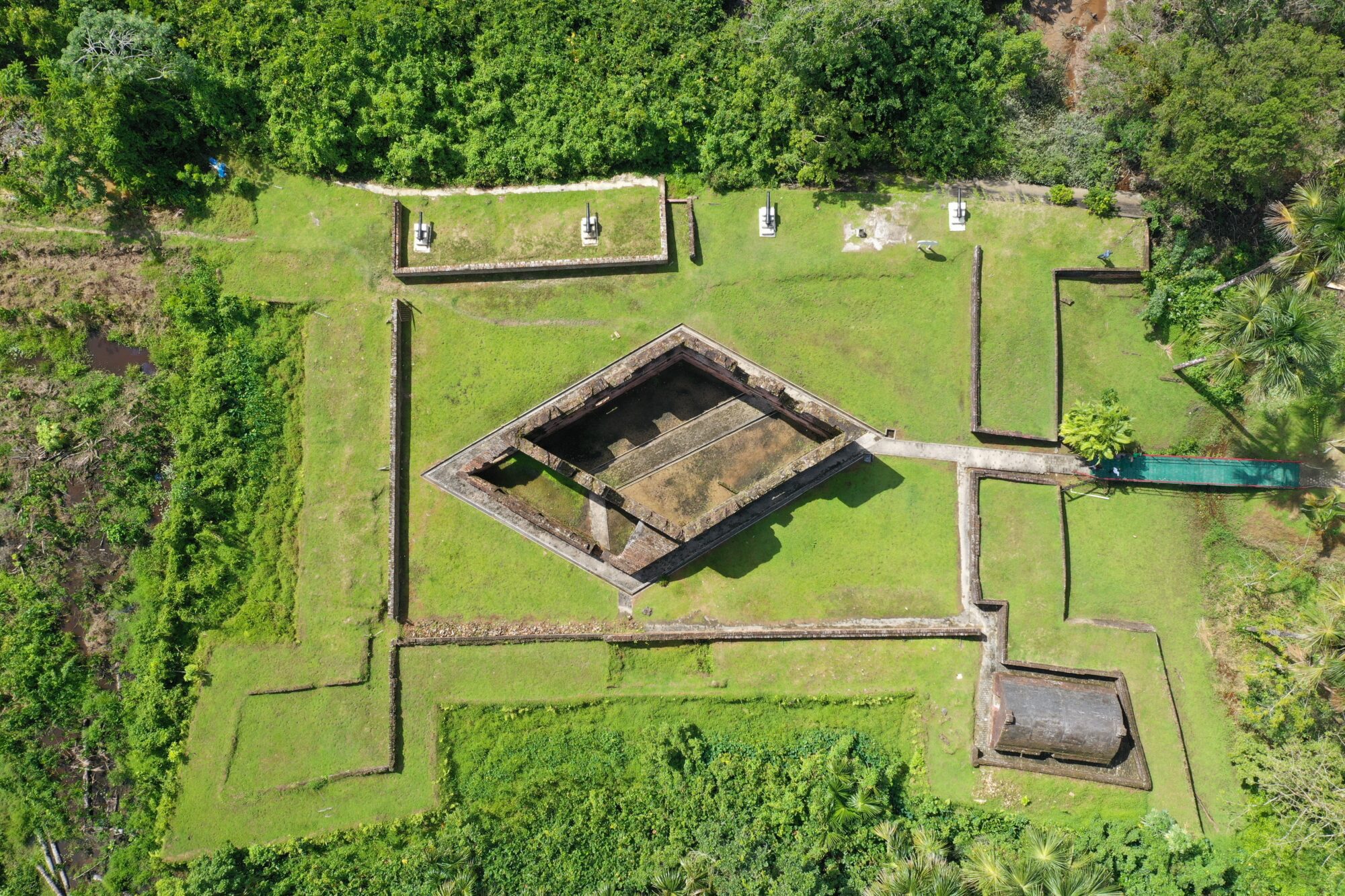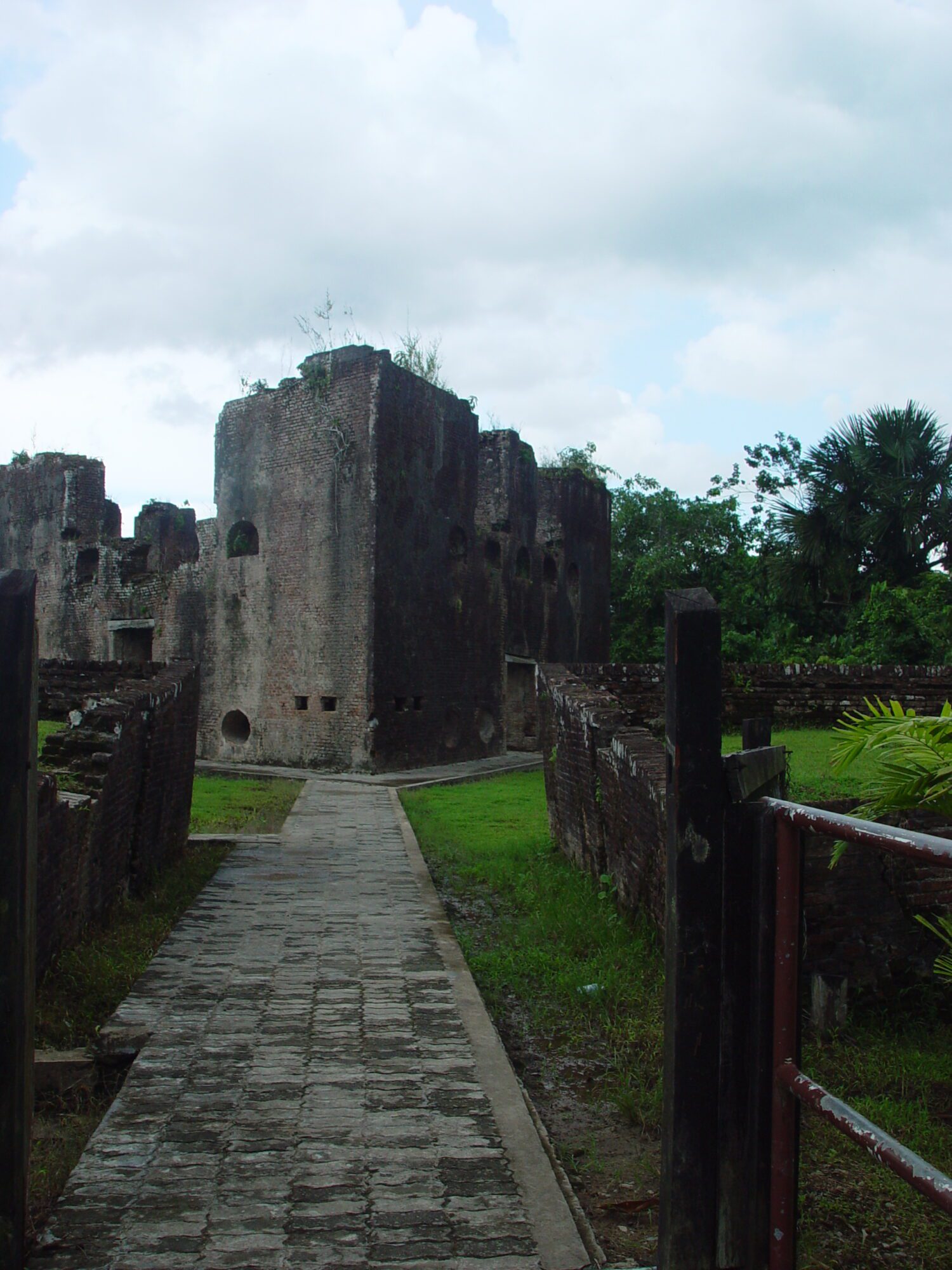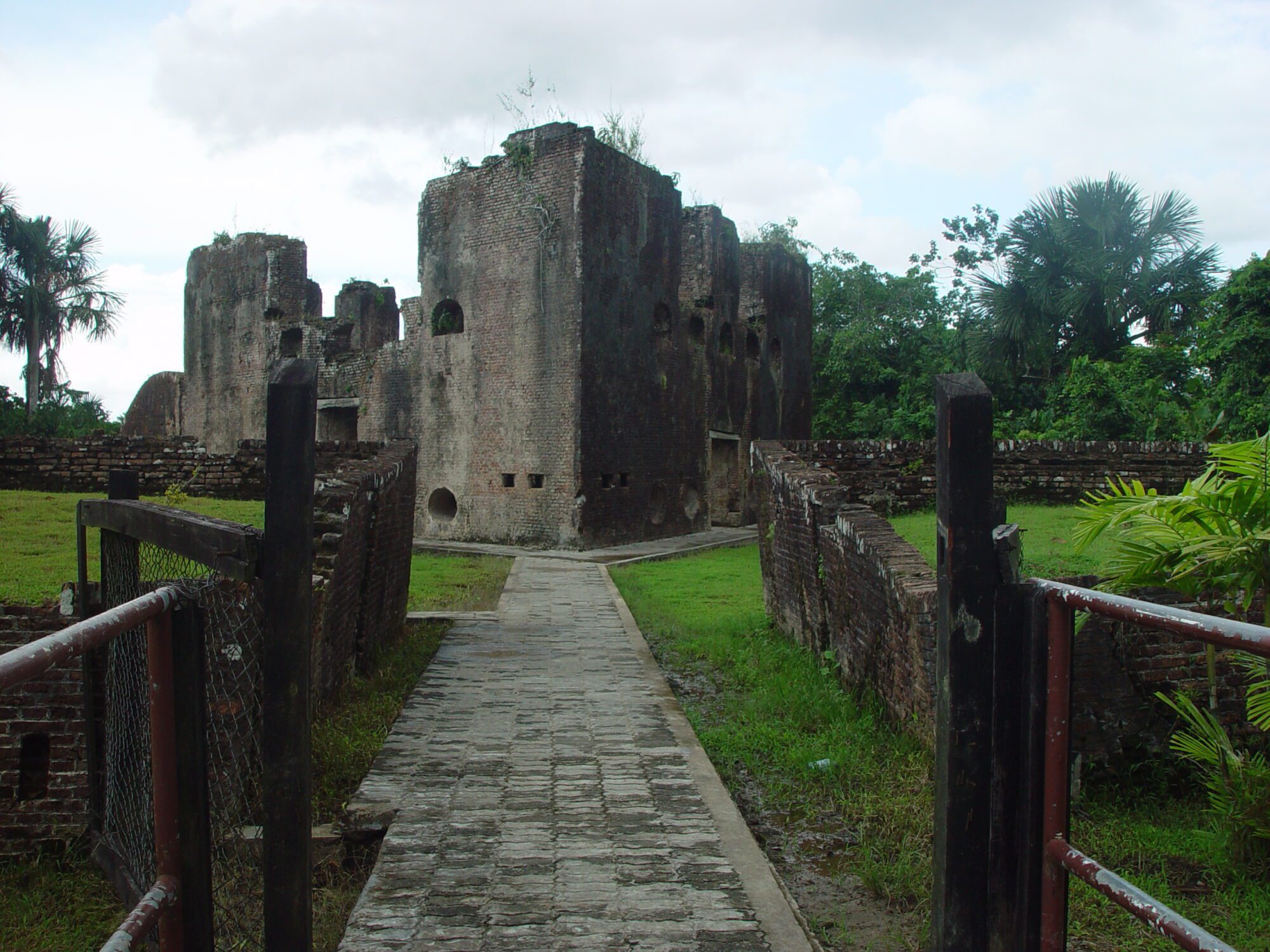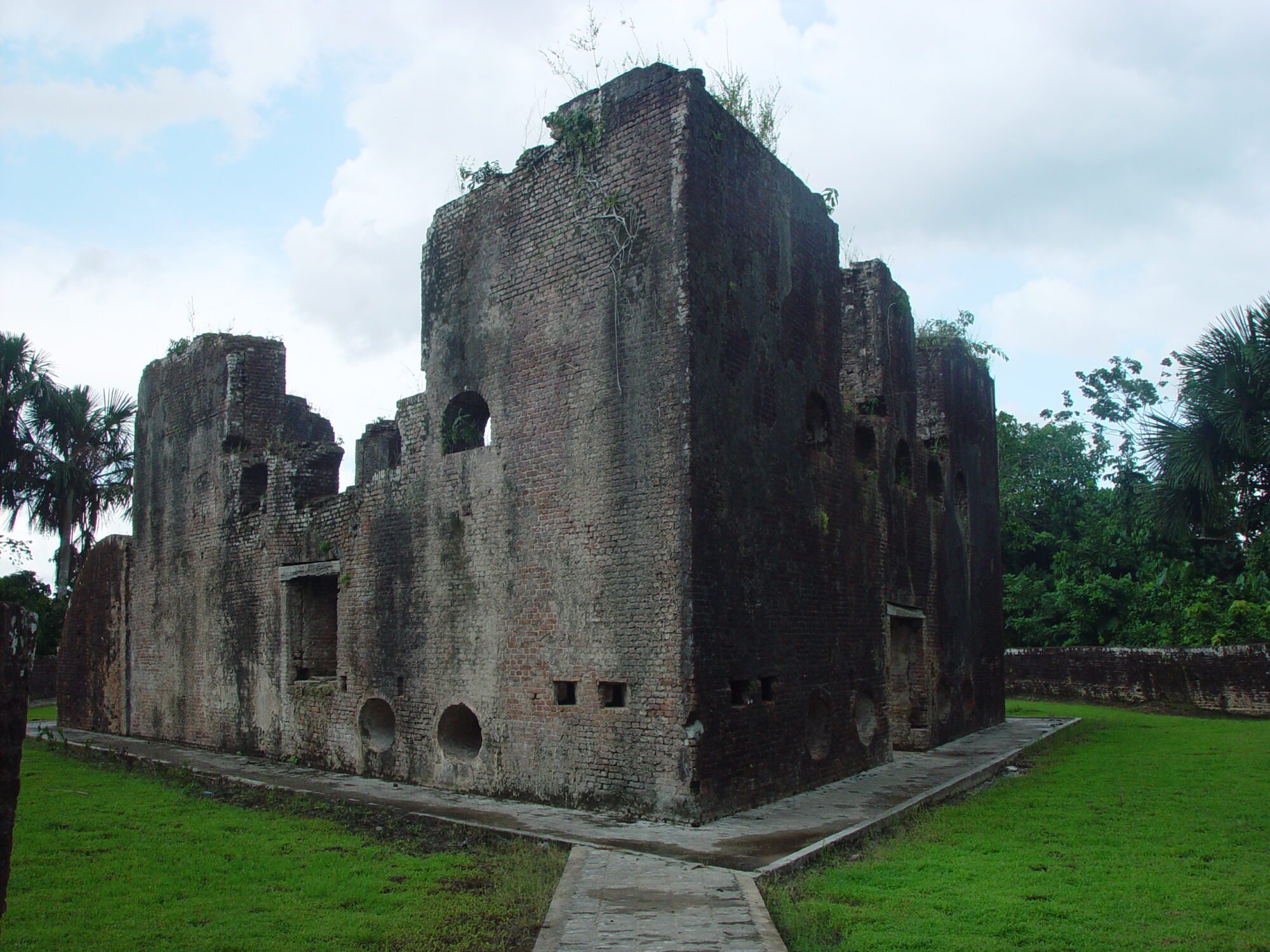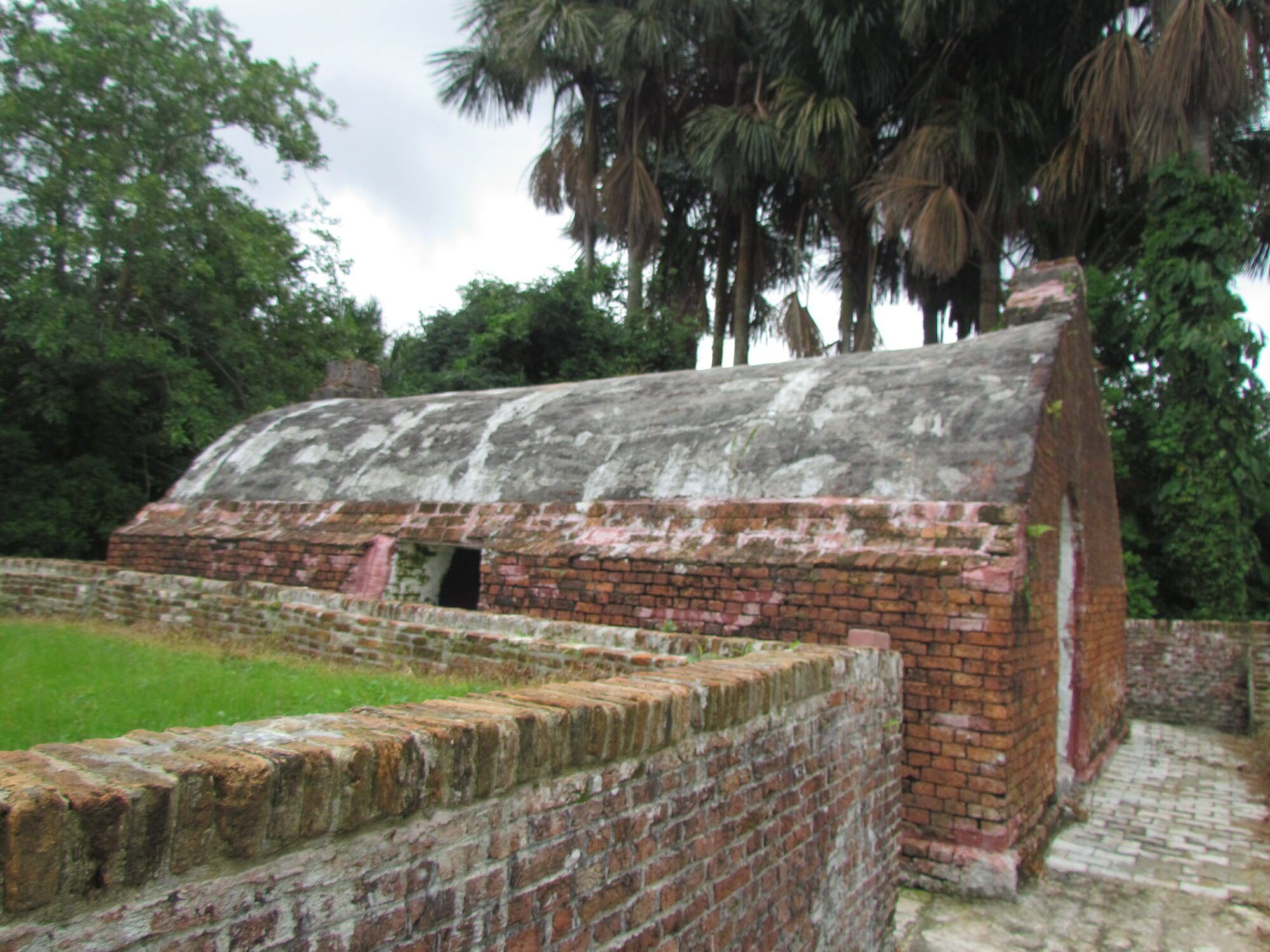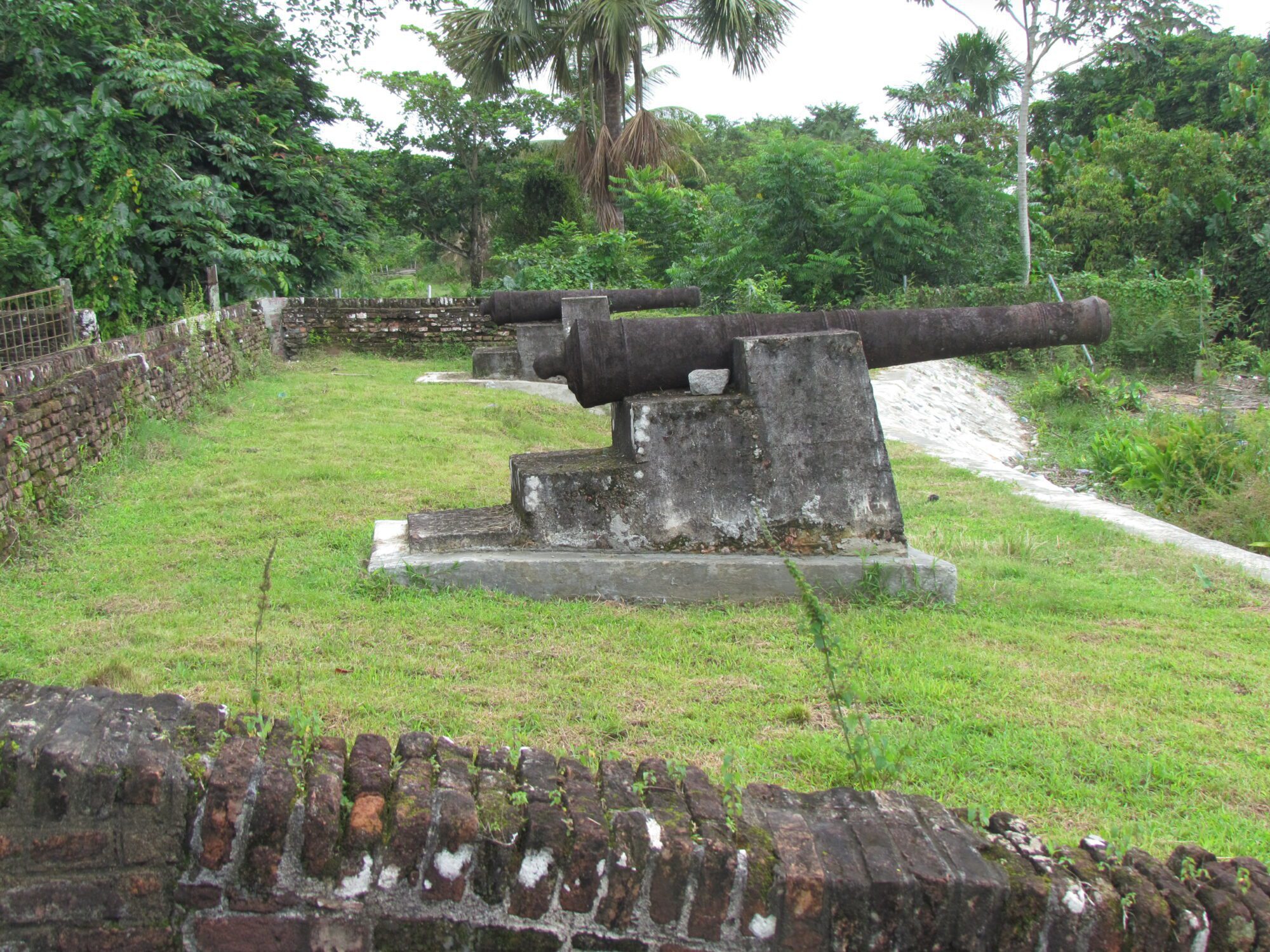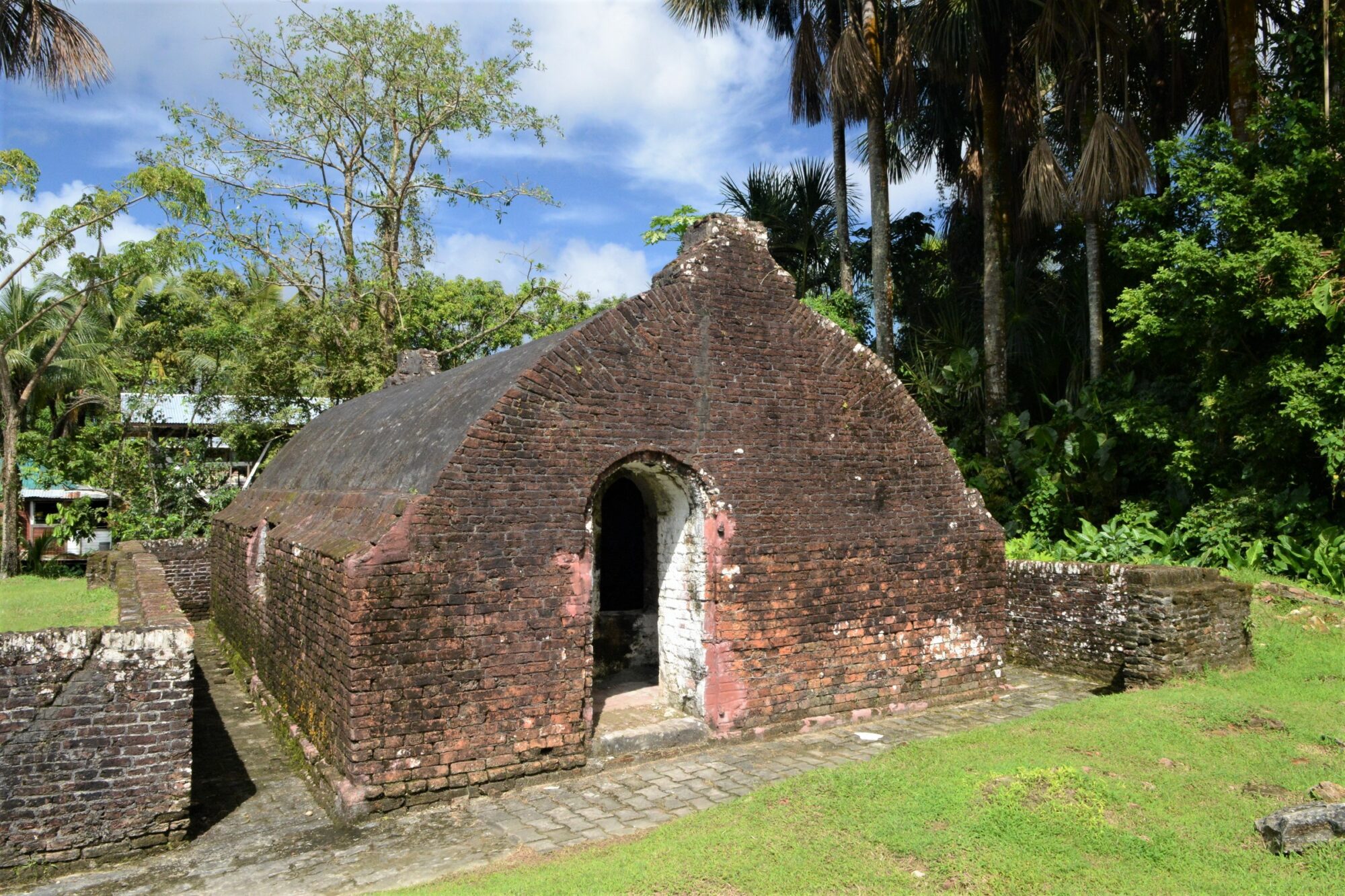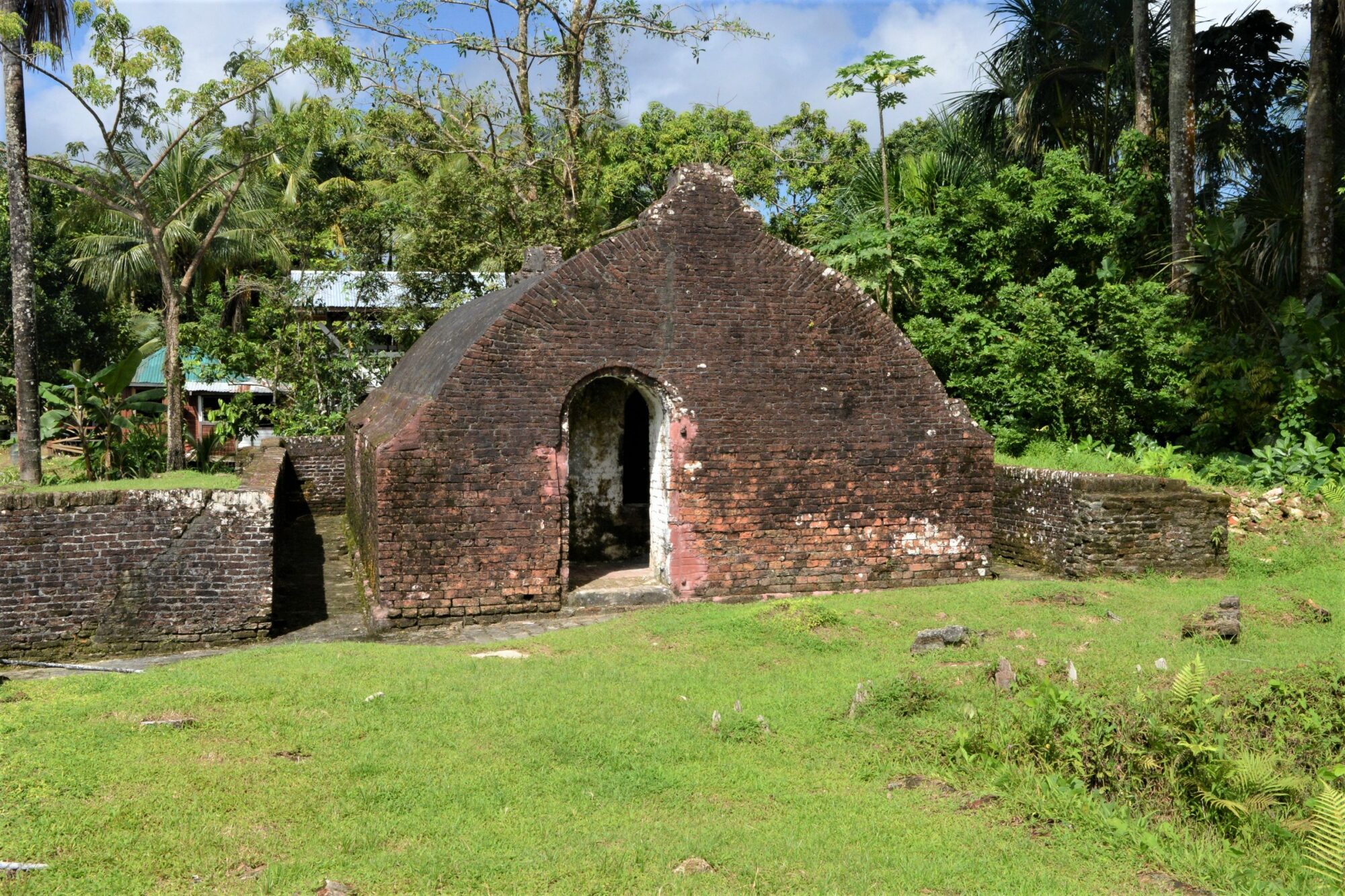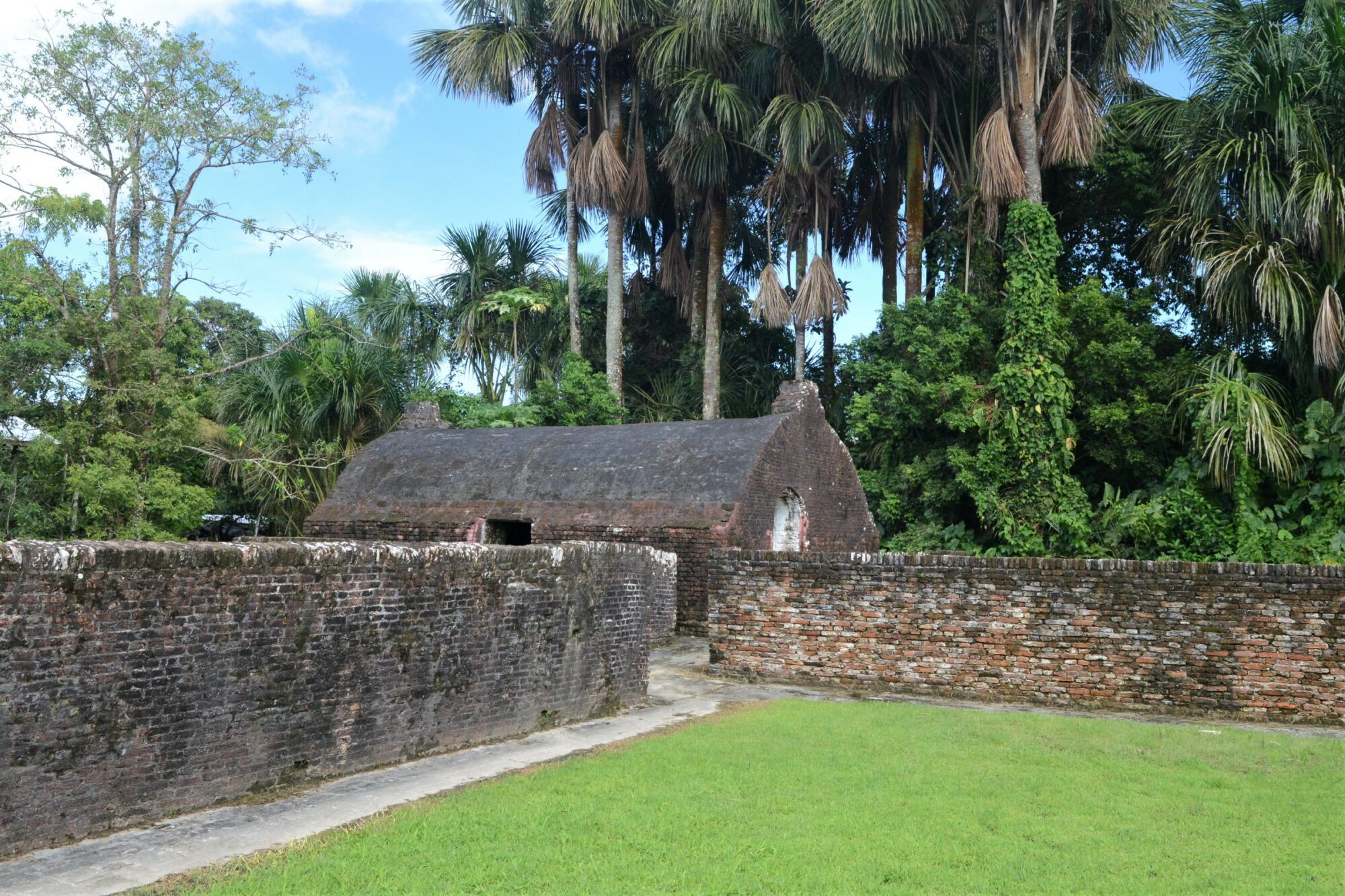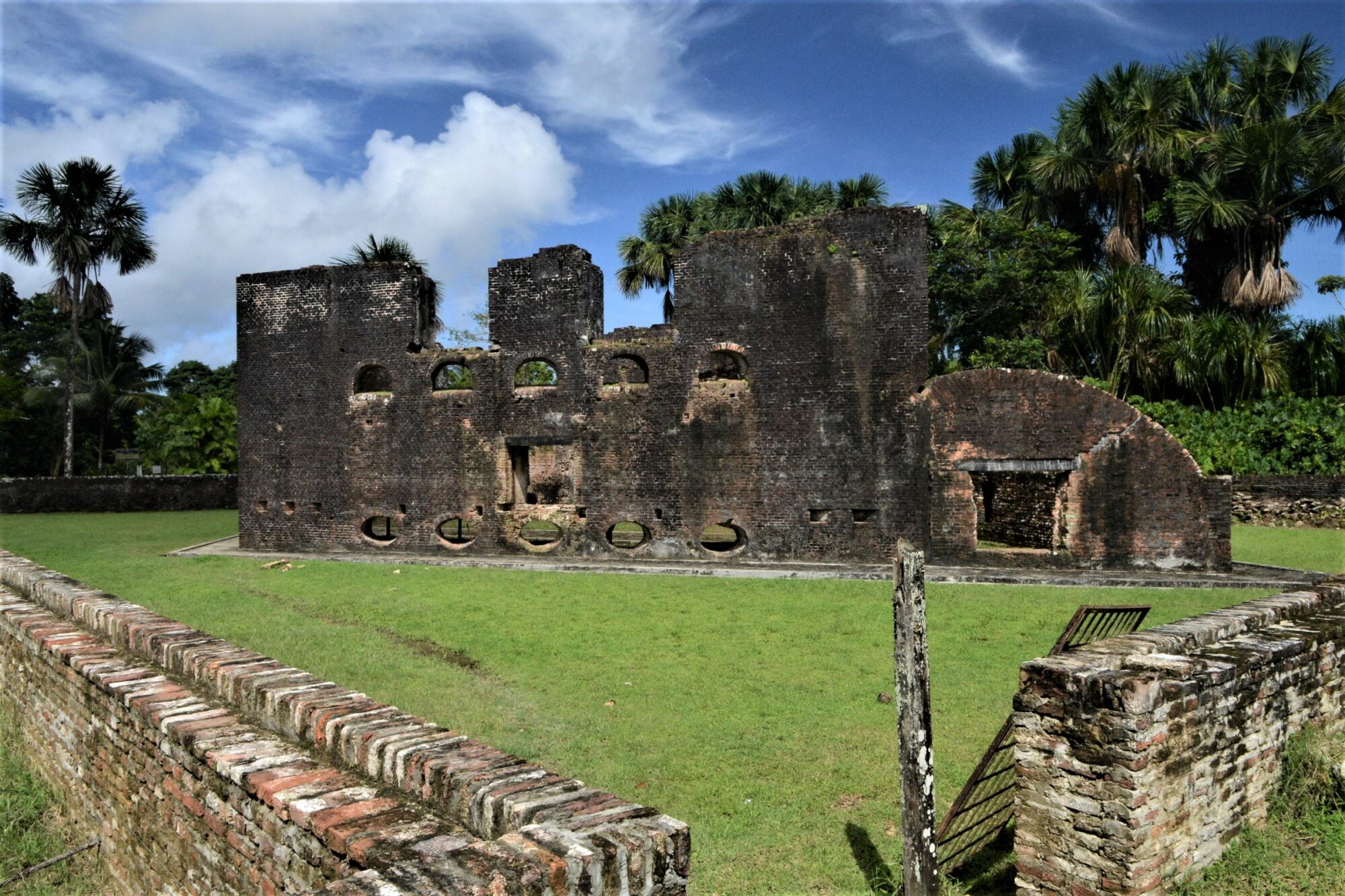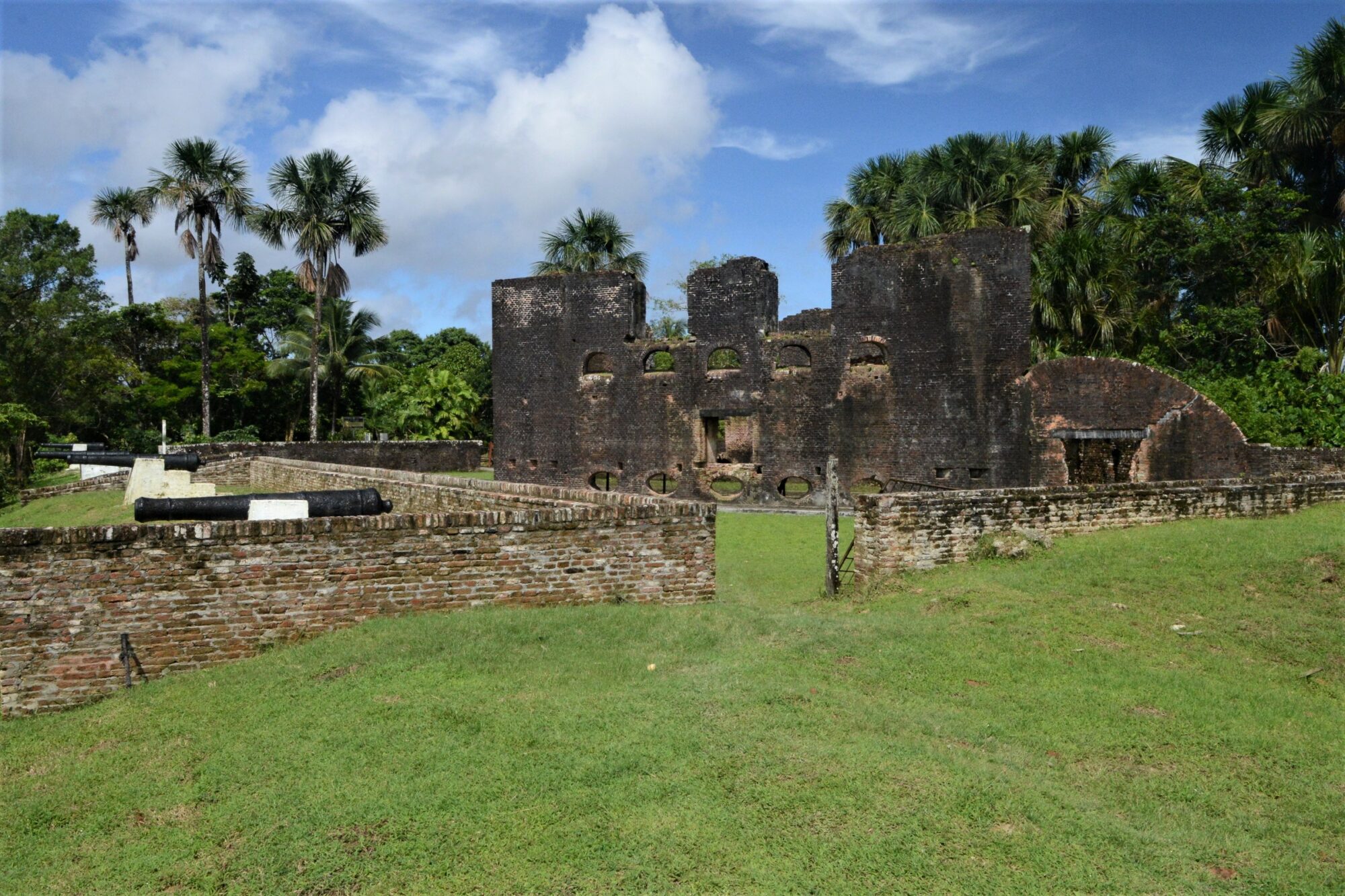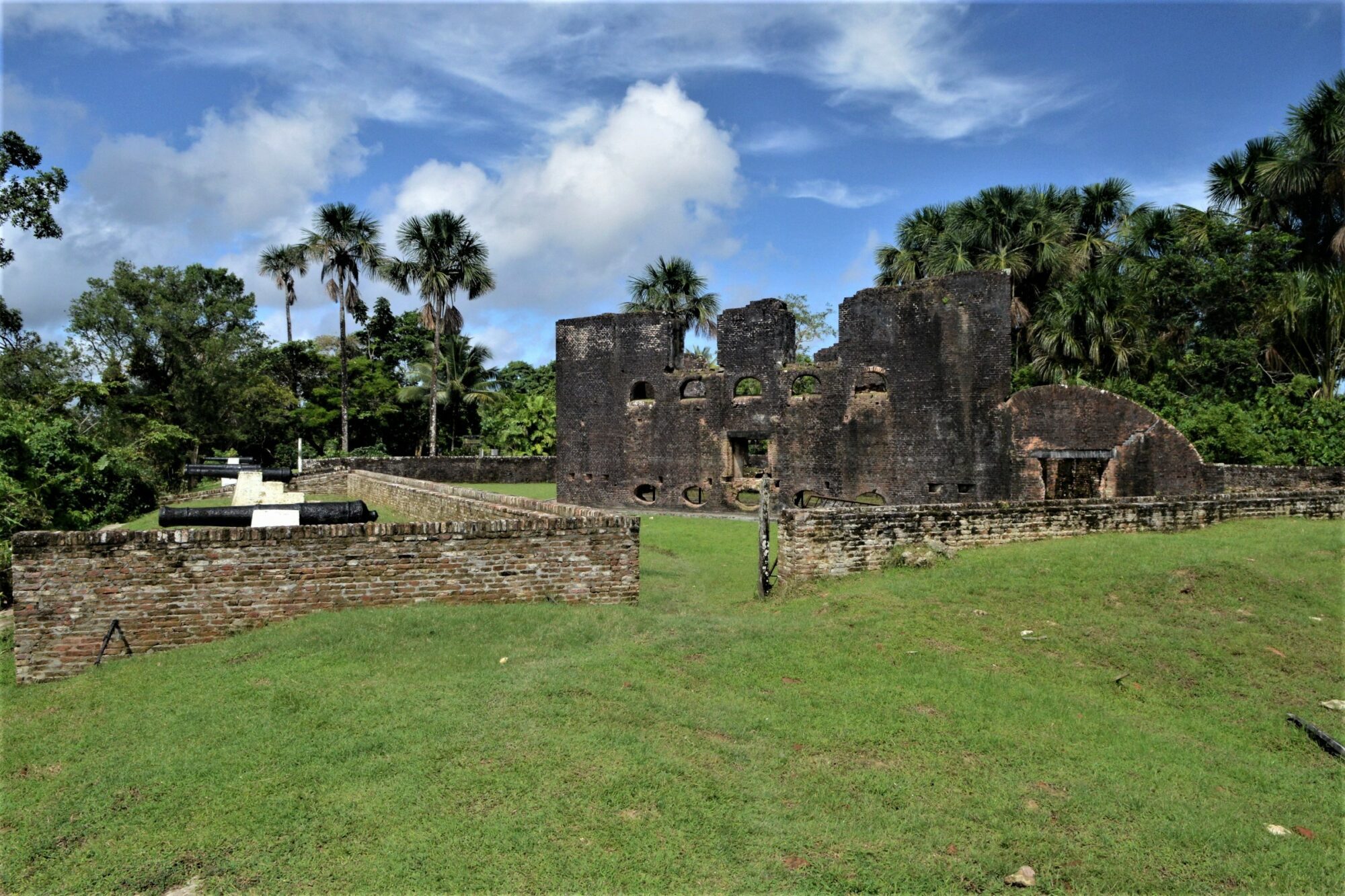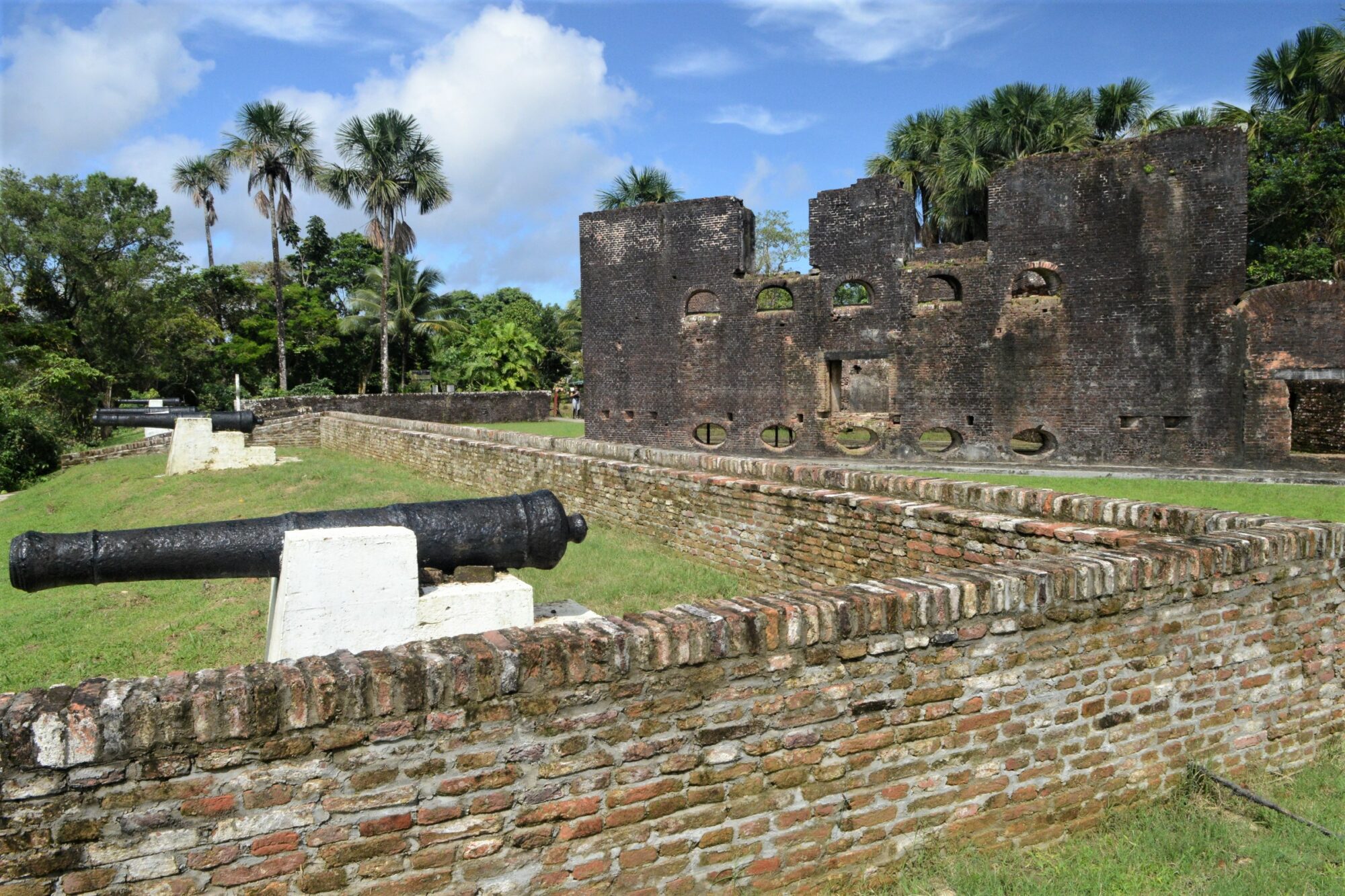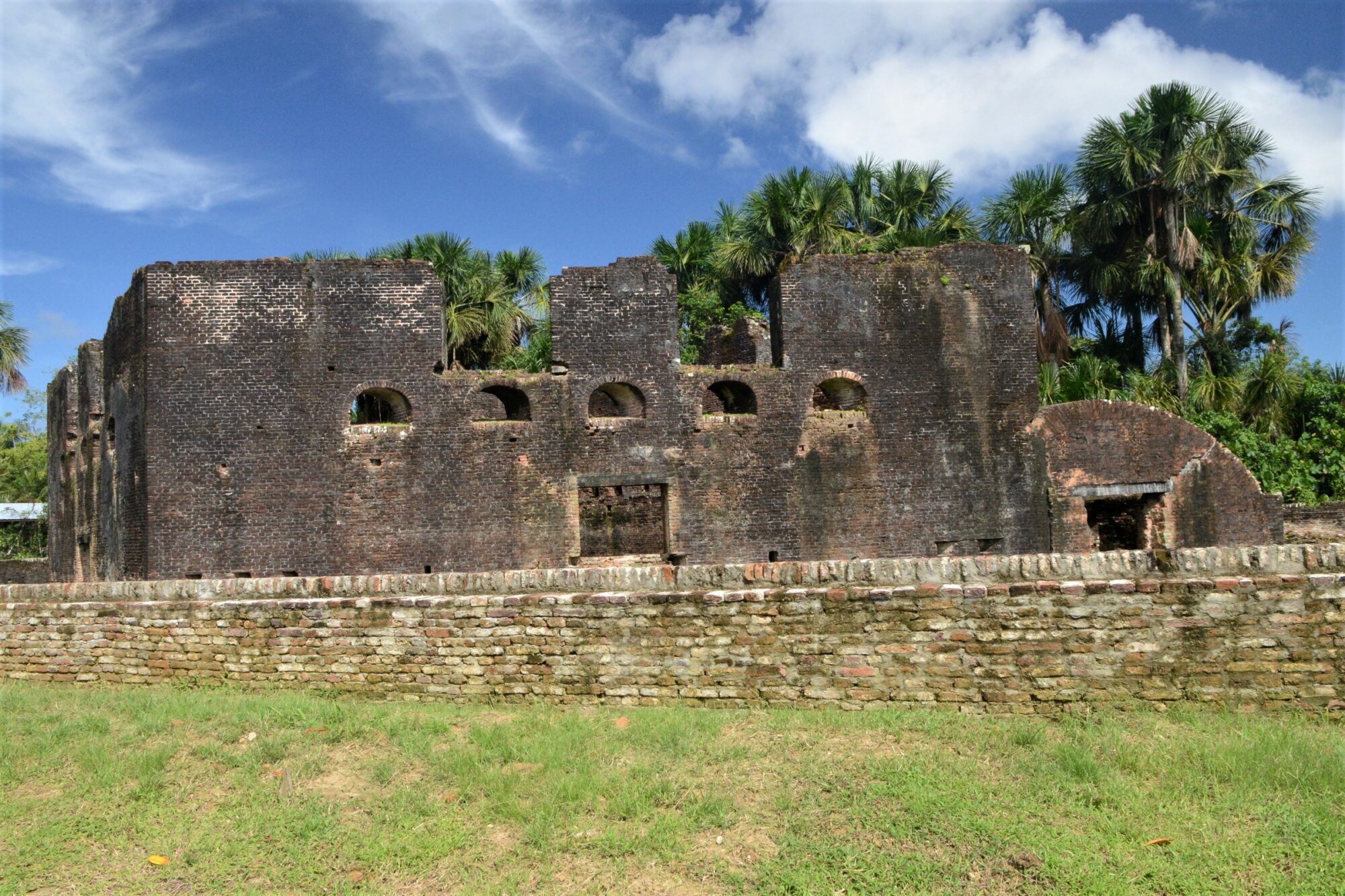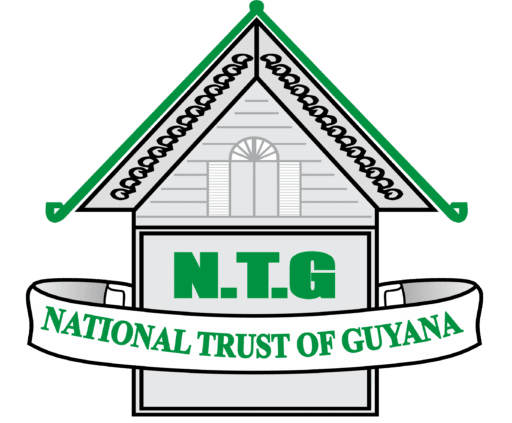Location: Fort Island, Essequibo River
Classification: Historic Site (Military)
Period/ Year Built: 1744
Historical Background / Description:
Fort Zeelandia, a National Monument, is located approximately 16 kilometres (10 miles) from the mouth of the Essequibo River on Fort Island. The history of the fort can be traced back to circa 1679, when Abraham Beekman, a Dutch Commandeur, saw the need for a fort on the island known then as Flag Island. The first fortified structure was built using timber and was near completion by September 1687. During this period, Fort Kyk-Over-Al, which is located further up river, was the capital of Essequibo.
A petition to construct a brick fort was laid in 1710, but due to conflicts between Commandeur, Peter Van der Heyden and private planters on the island, the petition was abandoned. The proposal for a brick fort was not revisited until Laurens Storm van’s Gravesande arrived in the colony and was appointed secretary to Commandeur Hermanus Gelskerke in August,1738. In his first petition for a new fort, Gravesande stated that the existing wooden structure could not be used. He further elaborated his statement by mentioning that after a few new palisades were installed, the older ones began falling to pieces, thus making rehabilitation unfeasible.
In 1739, the Dutch trading outpost at Fort Kyk-Over-Al was considered too small to house the capital. Flag Island received renewed attention after a Court of Justice meeting was held on the Island on October 5, 1739. In 1742, Gravesande was appointed Commandeur of the Island and during this period he made another petition for a new fort, for which he received approval. Gravesande indicated that the fort could be completed in two years and as promised, the fort was completed in 1744 and was named Fort Zeelandia.
Fort Zeelandia was considered strong for a small colony like Essequibo. It was described as quadrangle in shape, with 18-19 guns and four ramparts. Inside of the fort were three covered mason redoubts with flat roofs and embrasures. There was also a horn-work lined with palisades and armed with 12 guns along with an armoury. Studies have indicated that the fort was built in conformity with lozenge-shaped forts constructed along the coast of West Africa in the 18th century. By 1748, Fort Kyk-Over-Al was abandoned and the Dutch capital moved to Flag Island. The island was renamed in 1775.
